A to Z guide to the towns and villages of Tuscany
Ultimate guide to the towns and villages of Tuscany
In our latest A to Z series, we feast our eyes on the towns and villages in Tuscany. One of Italy’s most iconic and famous regions, Tuscany has been attracting tourists for centuries but how much do you know about some of Tuscany’s smaller towns and villages?
Anghiari
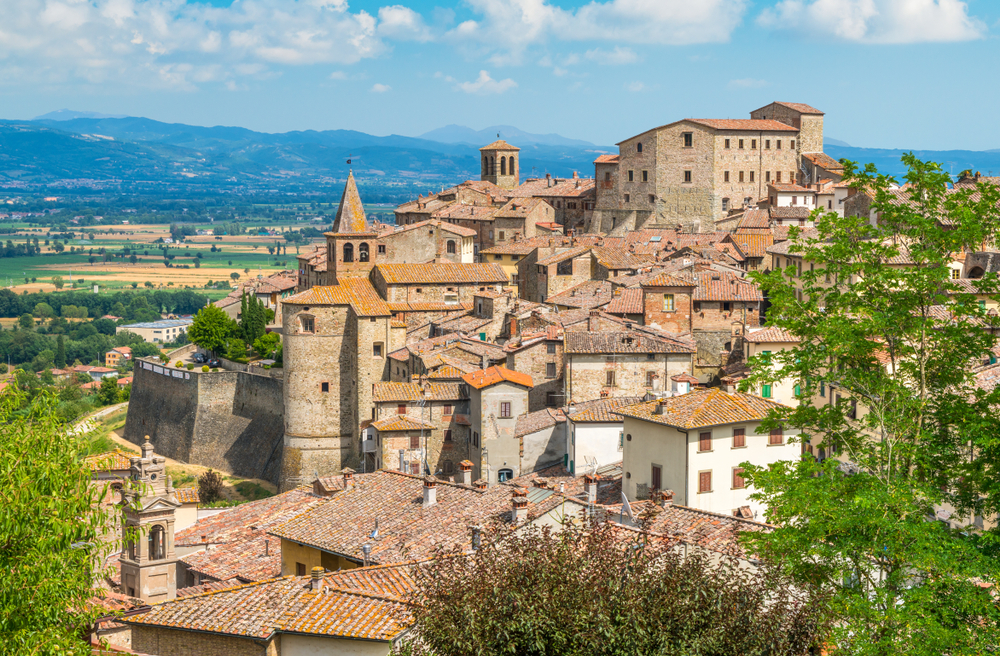
Anghiari is a beautiful hilltop walled town. It’s also listed in Italy’s list of ‘borghi piu belli d’Italia‘ (most beautiful villages in Italy) and has received the prestigious ‘Orange Flag’ from the Italian Touring Club and it’s not hard to see why. Enclosed within huge 13th century walls, this is an incredibly charming Medieval village with stone houses overlooking narrow streets adorned with tubs of flowers. The village is famous for its annual music festival, held every July. Another good time to visit would be in the Spring, to coincide with the Mostra-Mercato dell’Artigianato della Valtiberina (the Handicraft Market of the Tiber Valley) which is a great opportunity to admire the incredible work of local craftsmen.
Whatever time of year you decide to visit, make sure you visit the Campo alla Fiera where you can enjoy stunning views over the Tiber Valley. You’ll also find the 18th century Chiesa del Fosso here and the Campano (bell tower) which dates back to the 16th century. There are a number of other beautiful churches in Anghiari including the Chiesa della Badia, the Chiesa e Convento della Croce and the Church of Corpus Domini. Also worth a visit in Anghiari is Il Conventone and the Palazzo Pretorio (now home to the town hall but which was once the home of the old tribunal and where you can still find the old dungeons and chapel which contains a fresco by Antonio di Anghiari, one of the teachers of the great artist Piero della Francesca.) You’ll find more works of art, ranging from frescoes to sculptures and from paintings to plaques, in the Palazzo Taglieschi, home to the Museo Statale.
A second museum in Anghiari worth visiting is the Museo della Battaglia e di Anghiari in the Palazzo del Marzocco. Here you will find out more about the famous battle of 1440 between the Florentine troops and and Milanese Visconti. To celebrate the Florentine victory, Leonardo da Vinci was commissioned to depict the battle in Florence’s Palazzo Vecchio but sadly the work of art no longer exists however there are copies of it made by later artists. To see the site of the battle for yourself, head to the Via di Ronda where you can view views over the plains of Anghiari.
If you want to stay in Anghiari, then this stunning 7 bedroom villa in Tuscany is within walking distance of the village.
Arezzo
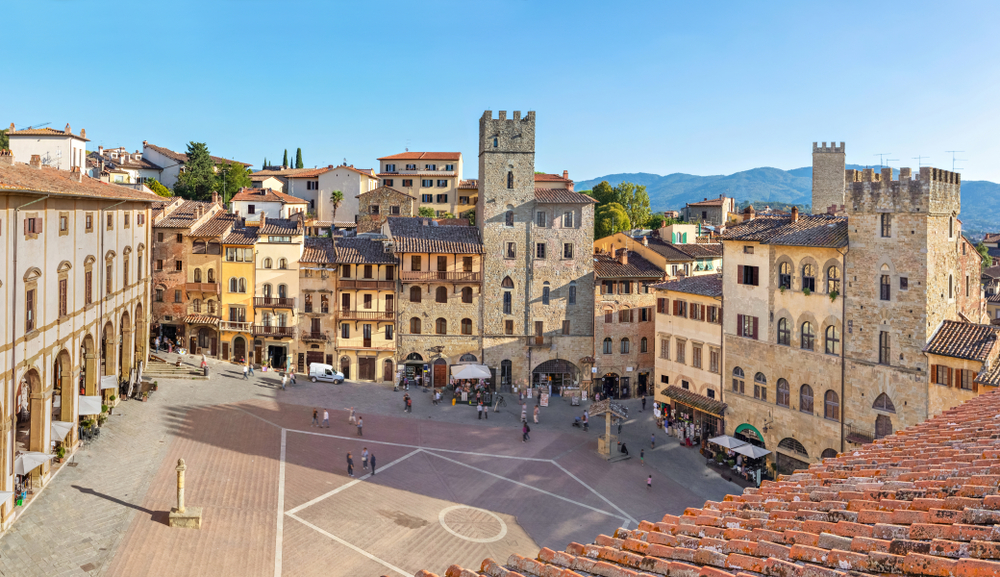
A bustling, vibrant town, Arezzo has had a long and rich history. Dating back to Etruscan times, evidence of Arezzo’s ancestors can be found in the remains of a Roman amphitheatre. Don’t miss climbing the 16th century Medici Fortress to enjoy some wonderful 360-degree views of Arezzo and beyond, and make sure you also make a bee-line for the Church of San Francesco, home to some early Renaissance frescoes by Piero della Francesca. Other religious buildings of note include the Cathedral, dedicated to San Donato, and the Church of San Domenico where you will find the wooden Crucifix by Cimabue.
These days, Arezzo is bursting with the obligatory art and architecture famed in this region of Italy. Its love of antiques is celebrated on the first Sunday of every month in a giant antiques fair held in the Piazza Grande.
Barbarino val d’Elsa

Barberino val d’Elsa is a charming village in the heart of the Chianti countryside. It owes its origins to the destruction of nearby Semifronte (which was destroyed by the Florentine army as the town had dared to challenge its authority) and, thanks to its location on the road that linked Florence and Rome, in Medieval times, it played a key role in Tuscan commerce but was also an important stopping point for pilgrims. In 1365, the Pilgrim’s hospital (Spedale dei Pellegrini) was built in the village and this remains a key attraction for tourists today. When visiting Barberino val d’Elsa, make a point of looking to see how many XV coats of arms you can spot on the Palazzo Pretorio, evidence of the towns noble origins. Also take time to admire a dome identical to the one built by Brunelleschi in Florence but several times smaller.
The village is accessed via two main gates – the Sienese Gate to the South which has been rebuilt over time and the Roman one to the North which remains remarkably in tact.
Barga
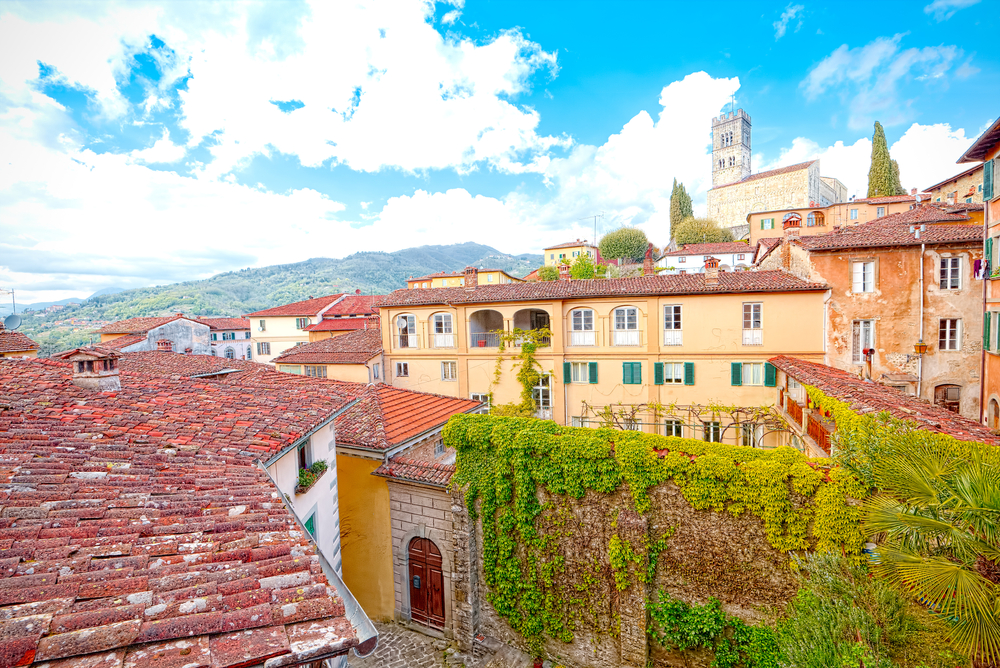
Another of the villages in Tuscany awarded with the status of ‘borghi piu belli d’Italia‘, Barga is a beautiful hilltop stopping point near Lucca.
Barga’s most famous resident was Giovanni Pascoli, a famous Italian poet. Visitors can learn more about him by visiting Casa Pascoli situated near the town in Castelvecchio Garfagnana. This is where Pascoli lived for 17 years but it’s now home to a museum set up in his honour. You’ll find some of his works here as well as his furniture. Several of the buildings in Barga itself have links to Pascoli too. These include the Teatro dei Differenti (Theatre of the Deviant) where Pascoli made his famous speech in favour of the war in Libya in 1911.
Barga is also home to the Collegiata di San Cristoforo, one of the finest examples of a Romanesque cathedral in Tuscany and home to a number of ancient frescoes and sculptures. Not only that but there are a number of beautiful palaces here too including the Palazzo Balduini, Palazzo Angeli, Palazzo Pancrazi and Palazzo Podesta.
If you’re visiting during the Summer months, try and time your visit to coincide with the Barga Jazz Festival, a fun annual event that attracts some of the best jazz musicians from around the world.
Buonconvento

A delightful village, Buonconvento may be small but it’s perfectly formed! It is surrounded by 14th century walls that pretty much remained completely in tact despite damage that was sustained during WWII. Seven of the nine original watchtowers are also still standing today. Head to Via Soccini, where you’ll find the bulk of the village’s cafes and restaurants along with the Museum of Sacred Art of the Val d’Arbia. The latter is home to a wealth of religious artefacts dating from the 14th to 19th centuries. A second museum in Buonconvento is also worth visiting – the Museum of Sharecropping – as are the Palazzo Comunale (town hall), the Palazzo Taja and the Chiesa dei Santi Pietro e Paolo, all of which have the red brick construction so typical of this area.
Campiglia Marittima
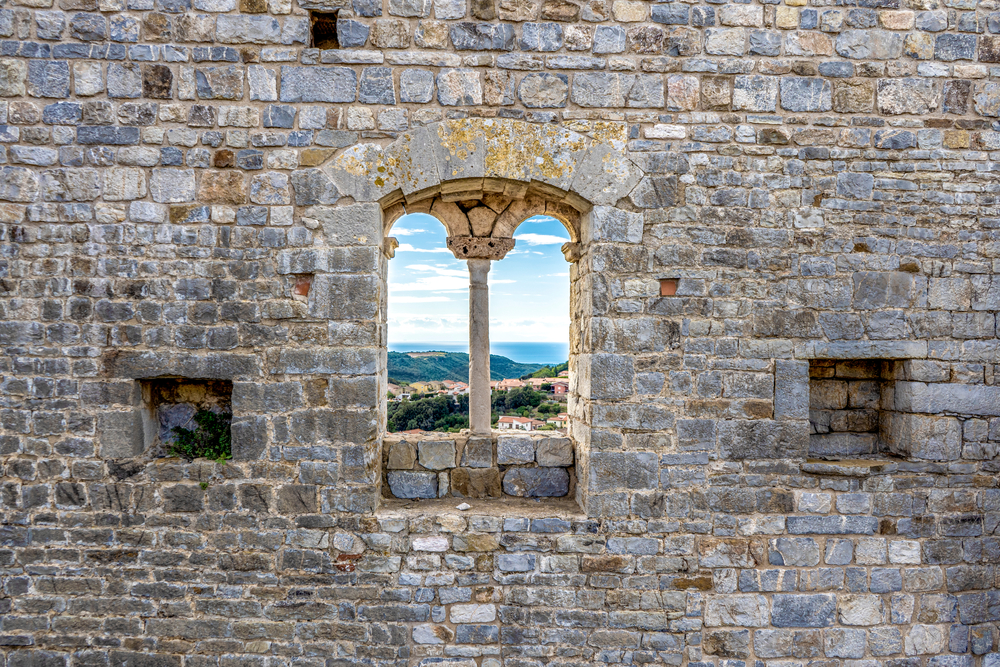
Situated in the Maremma region of Tuscany just 10km from the sea, the history of Campiglia Marittima dates as far back as the Etruscans however what you see today dates back to the Middle Ages. Head to the top of the village to explore the Rocca di Campiglia, the remains of a 10th century fortress which is now also home to the Museo del Dongione. Before you leave, you may also want to pay a visit to the nearby Calidario thermal baths. These natural hot springs would have attracted the Etruscans and Romans hundreds of years ago and, still today, you can enjoy wallowing in the 36 degree hot water pool.
Campiglia Marittima

Situated in the Maremma region of Tuscany just 10km from the sea, the history of Campiglia Marittima dates as far back as the Etruscans however what you see today dates back to the Middle Ages. Head to the top of the village to explore the Rocca di Campiglia, the remains of a 10th century fortress which is now also home to the Museo del Dongione. Before you leave, you may also want to pay a visit to the nearby Calidario thermal baths. These natural hot springs would have attracted the Etruscans and Romans hundreds of years ago and, still today, you can enjoy wallowing in the 36 degree hot water pool.
Capalbio

A perfectly preserved hilltop Medieval village not far from the Tuscan coast, Capalbio is a gem of a place to visit. Walk though its ancient gates, along its narrow alleyways and under its stone arches whilst soaking up the peace and tranquility of this picturesque village. The village is dominated by its ancient fortress – the Rocca Aldobrandesca – which has in part been transformed into an elegant Renaissance palace – the Palazzo Collachioni. You can enjoy some fantastic views from the terrace here. However, more wonderful vistas can be enjoyed from the walls of the village. These walls form a double circle. The inner lower walls date to Medieval times whilst the later, higher outer ones date back to the Renaissance.
Also of note is the 12th century Romanesque Church of San Nicola, as is the Oratory of Providence, home to an incredible fresco by Perugino. And not far from Capalbio is the Giardino dei Tarocchi (Tarot Garden). The marvellous creation of Niki de Saint Phalle, it’s a brightly coloured sculptural garden designed around tarot gardens.
If you want to visit Capalbio during your Tuscan holiday, then how about a stay in this Tuscany villa in Porto Ercole, approximately 30 minutes away.
Carrara
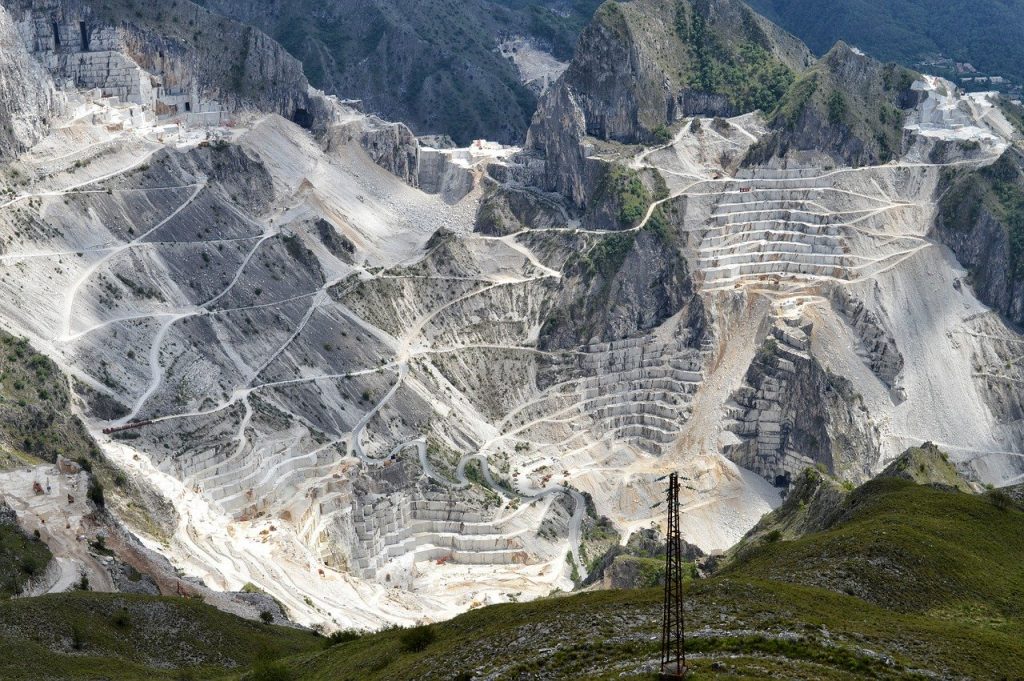
There is no doubt that Carrara is most famous for the white and blue-grey marble that has been quarried here for centuries. It’s quite mind blowing to consider that this is where Leonardo da Vinci would have sourced his marble from! If you want to learn more about the marble production and its history, then head to the towns marble museum to find out more.
Otherwise, there is not much in Carrara to attract tourists but it’s worth visiting the main square of Carrara – Piazza Alberica – which has in its centre the statue of Beatrice d’Este, the Duchess of Massa and Carrara, and which is surrounded by 17th and 18th century buildings including the Palazzo dei Conti del Medico. The Cathedral of Sant’ Andrea Apostolo is also worth a trip. Not surprisingly, it’s constructed completely from white marble, and is home to Carrara’s patron saint, St Ceccardus. In front stands the Giant, a statue by Baccio Bandinelli, one of Michelangelo’s rivals.
Casale Marittimo
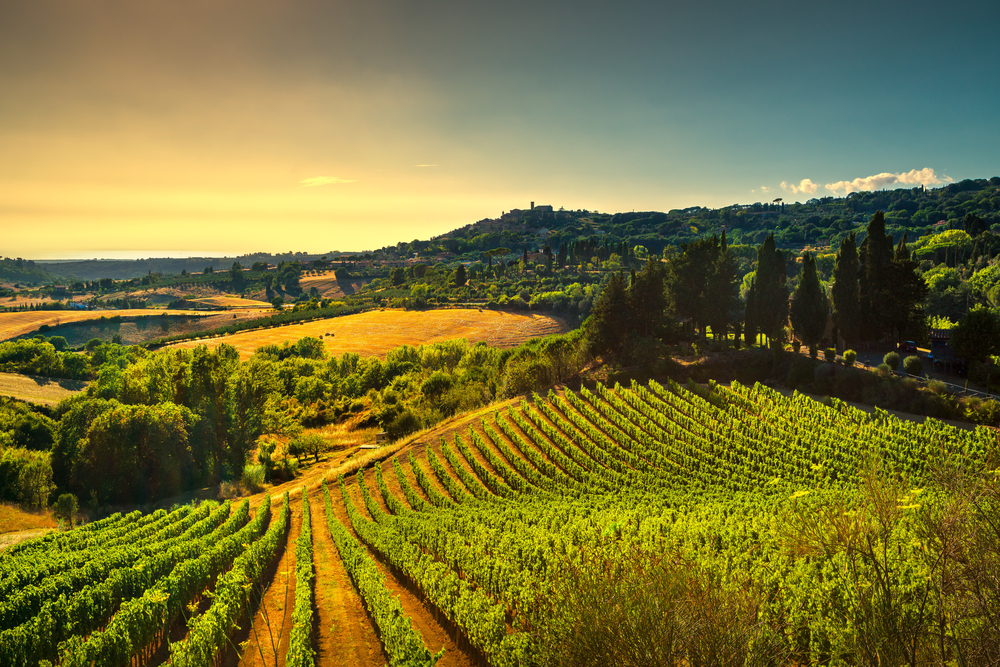
A beautiful village that, once again falls into Italy’s ‘borghi piu belli‘, Casale Marittimo is a sleepy but picturesque stopping point on any tour of Tuscany. Like many of Tuscany’s towns and villages, it holds a number of annual festivals dominated by food, including the snail fair in July and the wild boar festival in August.
If visiting Casale Marittimo, visit the Etruscan remains nearby which date back to the 7th century BC and which include the necropolis of Casa Nocera.
Casciana Terme
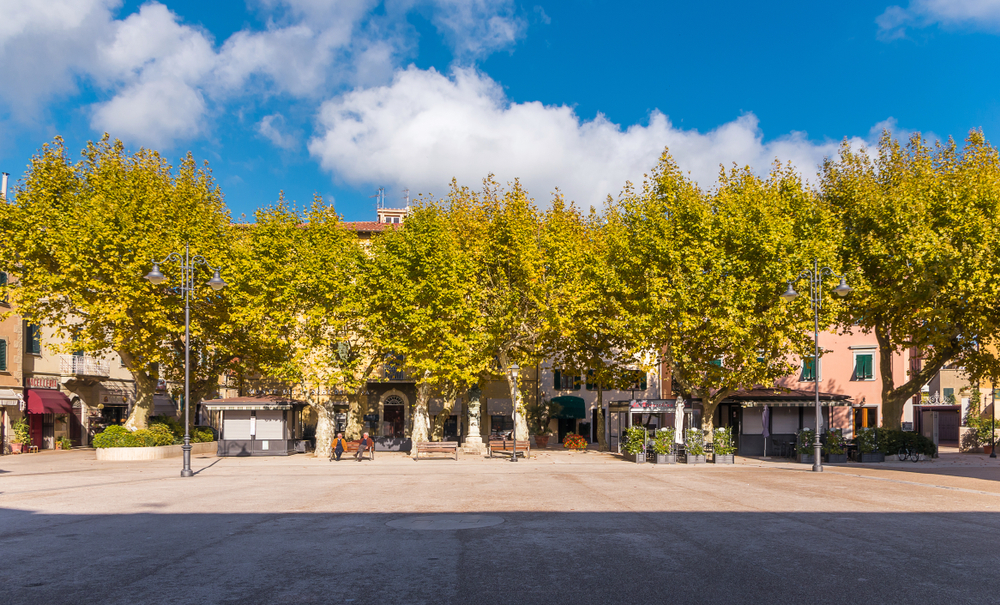
Casciana Terme is, without doubt, most famous for its natural springs. These bubbling hot waters with a natural temperature of 35.7 degrees, have been attracting visitors for centuries, drawn by their therapeutic properties. The first ‘thermal’ resorts here were commissioned in 1311 by Federico da Montefeltro which gives you a sense of their long and illustrious history. But the waters were discovered long before this by the Countess Matilde di Canossa. So the story goes, she discovered the healing properties of the waters by watching a blackbird whose infirmities were healed by their therapeutic properties and who went on to bathe in the waters herself to treat her own old age and gout. The thermal waters are today still called ‘Acqua Mathelda‘ in honour of the countess.
Casciana Terme has a sense of old worldly elegance to it as you wander around its streets.
Castellina in Chianti
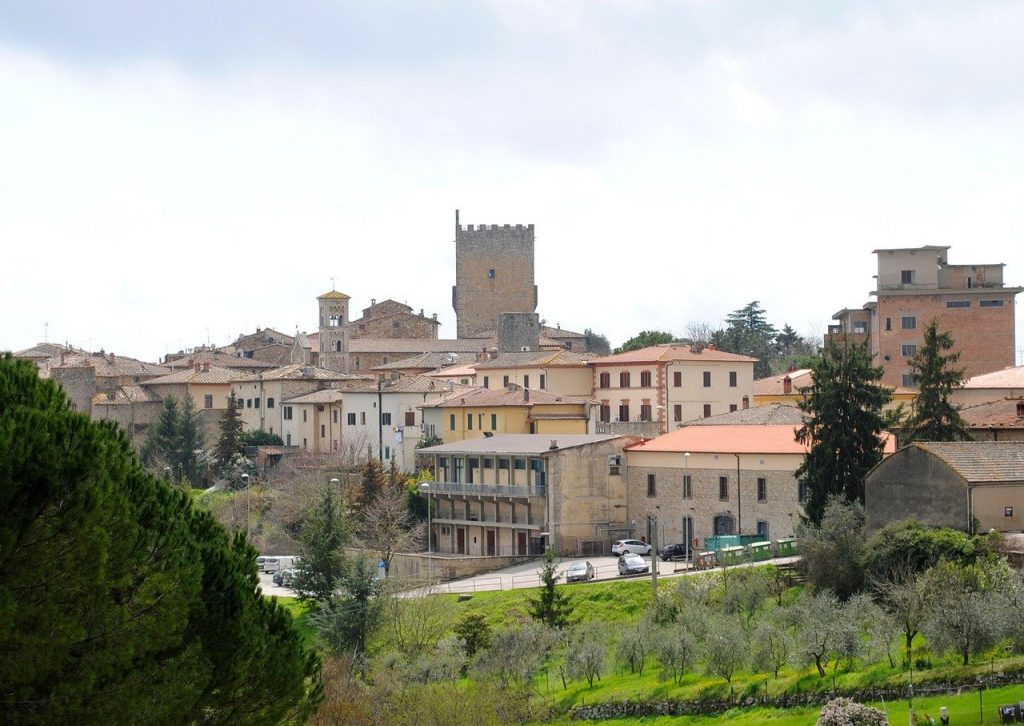
In the heart of the Chianti countryside, Castellina in Chianti is dominated by its fortress (rocca) which is home to the Museo Archeologico del Chianti Senese, where visitors can find out more about the Etruscan roots of this ancient village. Also not to be missed is walk along the Via delle Volte. Built to defend Castellina from its enemies, peak through the narrow holes in the wall to enjoy some incredible views of the surrounding countryside. Any visit to the town would not be complete with enjoying a wine tasting though. You’ll find some of the best Tuscan wines to sample here.
Want to visit Castellina in Chianti for yourself? Then this 4 bedroom villa in Tuscany is within cycling distance of the centre of the town.
Castiglion Fiorentino
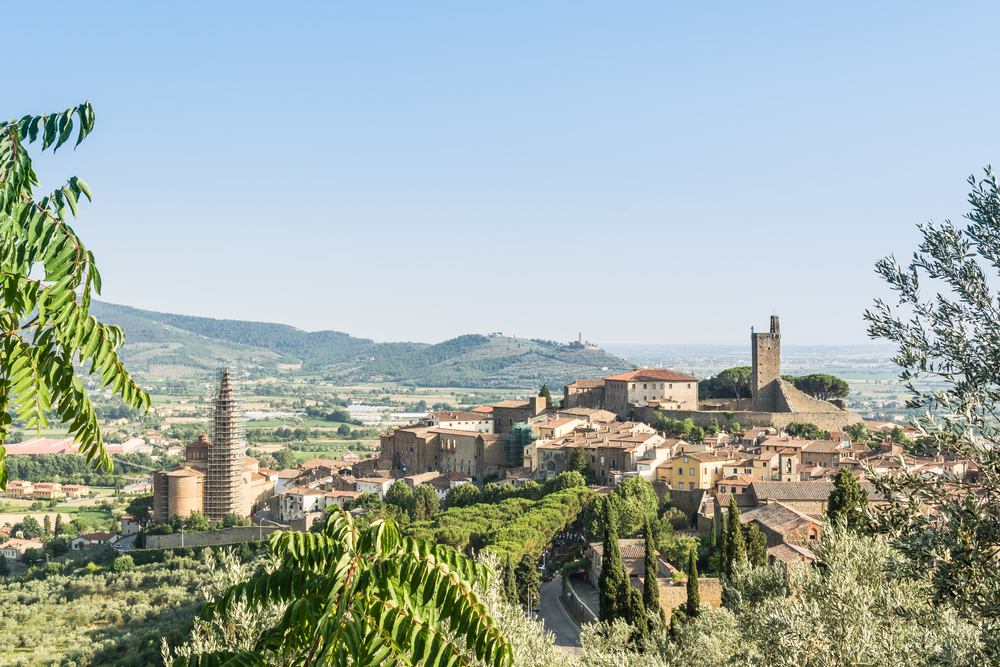
Castiglion-Fiorentino is a charming village dominated by the Cassero Fortress and surrounded by 13th and 14th century walls which connected the fortress to the perimeter. Head into the town via the Florentine Gate, originally constructed in the 12th century but which underwent modifications in 1813. Buildings of interest include the Palazzo Pretorio (courthouse), where you can see a collection of Etruscan artefacts, the Pinacoteca (art gallery) and Church of San Angelo, the early 16th century Vasarian Loggia and the Church and Cloisters of San Francesco.
Try and visit in the Spring if you can, during the popular Maggio Castiglionese. Alternatively, it’s worth visiting in the third Sunday in June when the palio takes place in the Piazza Garibaldi.
Castiglione di Garfagnana

Castiglione di Garfagnana dates back to Roman times when it was a Roman camp (castrum) thanks to its strategic position dominating the valley that lies between the Apennines and Alps Apuane. Its prominent position meant that it was subject to a number of sieges though, hence the 750 metre long town walls which are up to 17 metres high. These days, the most striking building in Castiglione di Garfagnana is its incredibly well preserved fortress. Sadly, the building is privately owned so it’s not possible to look around but you can enjoy fantastic views of the surrounding countryside from the area around it.
There are also a couple of churches of note within the village. These are the Church of San Michele and the Church of San Pietro whose bell towers are found on two of the towers of the town walls.
Finally, don’t leave before paying a visit to the Parco della Rimembranza and the Torrione della Brunella for more breathtaking views and for a chance to see what life would have been like for prisoners kept in the cells within the keep. Also nearby Castiglione di Garfagnana is the 13th century Medieval bridge in Mulino.
Certaldo
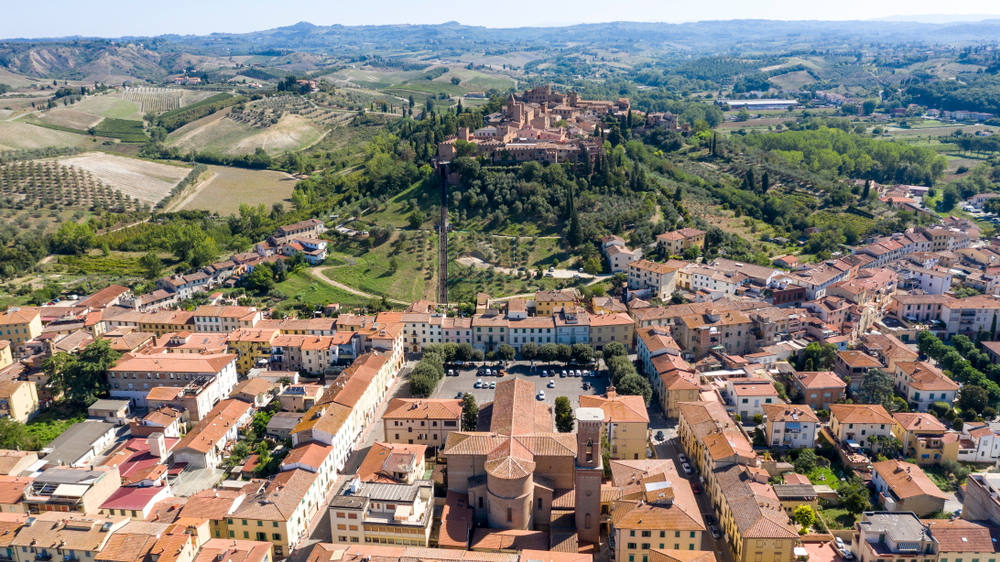
Certaldo is split into two main areas – ‘Certaldo Bassa’ (the lower and newer part of town) and ‘Certaldo Alta’ (the upper, medieval centre). It’s the latter where we recommend you spend most of your visit. They are connected by a funicular saving your legs from having to make the steep climb up the hillside.
Accessed via one of three ancient gates which provide access through the huge defensive walls – Porta Alberti, Porta al Sole and Porta al Rivellino – the main street in the Certaldo Alta is the Via Boccaccio. Take time to explore the Medieval streets, imposing palazzi (the most famous of which is the Palazzo Pretorio and small piazzas.
If visiting in July, time your visit to coincide with the International Street Art festival that takes place each July. Or visit in the Autumn when you’ll come across the Boccaccesca, a festival that revolves around food with street vendors selling local products and open air cooking lessons taking place. The event is named after Certaldo’s most famous resident and author – Boccaccio – who was born here and was buried here in 1375. Visitors can visit the house where he spent the last few years of his life and can admire the statue erected to comemorate him in 1875.
Cetona
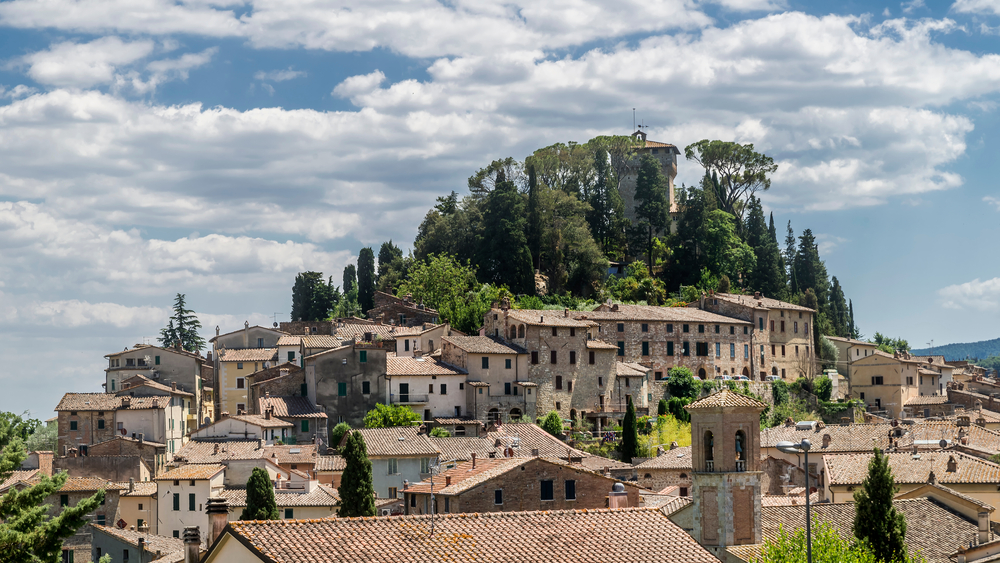
Cetona sits at the foot of the Cetona mountain and is a charming little Medieval town. The Piazza Garibaldi is the centre and focal point of the town, whilst above sits the 10th century fortress (rocca), surrounded by pine and cypress trees. The latter is now a private residence but would once have protected the town with its three watchtowers.
A good starting place to any visit is certainly the main piazza. Built in the 16th century by Gian Luigi Vitelli, it is a wide open space tiled with travertine. Here you will find the 12th century church of San Michele Arcangelo, home to a wooden statue of the Madonna delle Grazie dating back to 1300, as well as the later 16th century church of Santissima Annunziata. Also of note here is the 18th century Palazzo Vitelli and Palazzo Terrosi which opens its gardens to the public during the Summer months. The piazza is probably so-called as one of these palaces has a plaque on that states that Garibaldi and his wife slept there in 1849.
Other buildings of note in Cetona include the church of Santissima Trinita, home to several frescoes (among them a Madonna of the school of Pinturicchio) and the Palazzo Minutelli, where the Prehistoric Museum of Mount Cetona is found. Mount Cetona was formed 225 million years ago and was home to Neanderthal man. Archeologists have uncovered much evidence of his existence on the mountain, all to be found in this interesting museum. Not surprisingly, the 1148 metre high mountain is also a great place to enjoy some fantastic views over the surrounding countryside. On a clear day, you can see as far as Assisi and Perugia. If visiting Cetona and you’d like to find out more about its history, then it’s also worth paying a trip to the nearby Belvedere Archeodromo, where you will find ancient remains including a reconstruction of a Bronze Age village.
If visiting in the Spring, then head to Cetona on 25 April to take part in the ‘Cetona in Fiore‘ festival, when the town is adorned with colourful flowers. Or if you’re a foodie, then visit in June, when there is both the Sagra del Bico and Pastrignocchi. Alternatively, head to Cetona when La Corsa delle Brocche is taking place. Held annually at the end of July and beginning of August, the festival is essentially a competition between the three contrade of the town – Porta a Latere, Porta Castello and Porta Capperoni. It’s quite a spectacle to watch the ‘Race of the Ceramic Pitcher’ when you’ll find men and women carrying pitchers of water around the square, taking care not to spill any.
Chiusi

Chiusi was a key settlement in the Etruscan period and so it’s not surprising that there are many Etruscan artefacts in Chiusi and the immediate vicinity. The Museo Archeologico Nazionale Chiusi is home to the majority of them and, through the museum, it’s also possible to arrange a guided tour of the main Etruscan tombs near the town including the Tomba della Scimmia and Tomba del Leone.
Directly opposite the museum is the The Romanesque cathedral – Duomo of San Secondiano – where visitors can glimpse some Roman artefacts including pillars, capitals and mosaics. The cathedral museum contains a number of religious books and artworks but probably of most interest is the Labyrinth of Porsenna that the museum leads to, a network of tunnels beneath Chiusi once used to drain the rain water away. A guided tour of these is certainly recommended.
Collodi
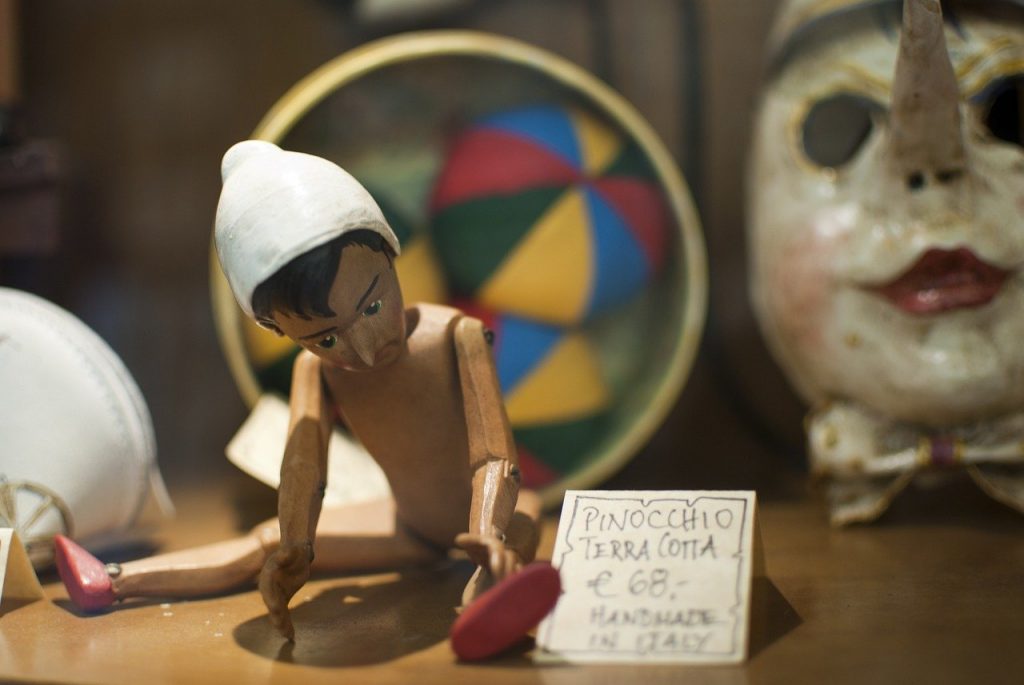
Collodi is, without doubt, most famous for being the birthplace of Carlo Lorenzini, author of Pinocchio, who took the town’s name as his pen name. The town honoured the writer by building a theme park to the wooden puppet – Pinocchio Park – but these days, visitors will probably find it a little tired and in need of some TLC. Stalls around the park are focused on selling Pinocchio memorabilia. Otherwise, Collodi is a good example of Medieval architecture and is dominated by its two principal buildings – the Rocca Antica castle and the Villa Garzoni residence with its delightful landscaped gardens and home to a butterfly garden.
Coreglia Antelminelli

A pretty mountain village framed by the Appenine mountains behind, Coreglia Antelminelli is most famous for its production of plaster figurines. The history of the industry dates back to the 16th and 17th centuries when it would have been the main occupation of residents in the town. In the late 19th century, figurine maker Carlo Vanni set up a school in his palace in Coreglia to educate local young people about the trade. This palace is now the home of the Museum of the Plaster Figurine and Emigration.
Also worth seeing in the village is the 11th century Castruccio Castracani tower. A massive bell tower approximately 25 metres tall, it was originally used as a defensive watchtower. And head inside the earlier 9th century Church of San Martino where you will find some exceptional artworks including Pietro Sorri’s Our Lady of the Rosary dating back to 1598.
Cortona
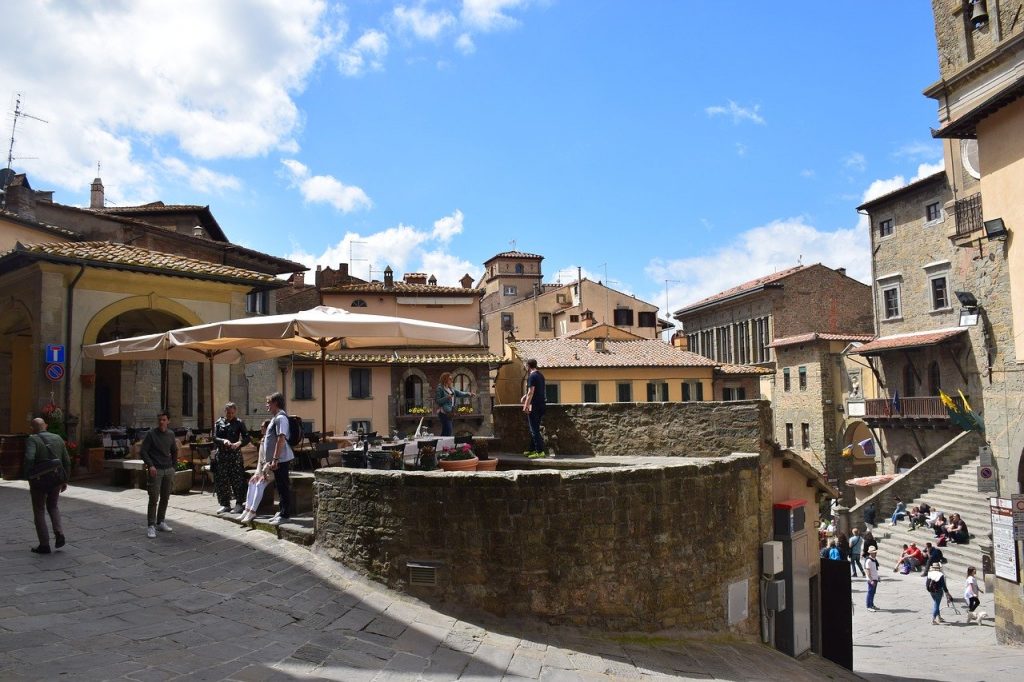
Made famous by Frances Mayes’ book and subsequent film, ‘Under the Tuscan Sun’, Cortona attracts thousands of visitors each year. Its history dates back to the Etruscan period when it was called ‘Curtun’ and today a number of Etruscan remains can still be seen, many of which have been housed in the Etruscan Academy Museum of Cortona (MAEC), one of Italy’s most important Etruscan museums.
Sat 600 metres high atop a hill, the elevated setting ensures that Cortona enjoys wonderful views over the valley below. Head to the Santa Margherita Sanctuary and to the Girifalco Fortress (partly open to the public) where you can enjoy some of the best views.
When in Cortona, also take the time to visit the Franciscan hermitage Le Celle. This is the first monastery built by Saint Francis of Assisi and where visitors will still find a small community of friars living today. Visit St Francis’ cell which has been carefully preserved.
Villa Manuela is a traditional 3 bedroom villa near Cortona should you decide that Cortona is the perfect base for your next holiday in Tuscany.
Cutigliano
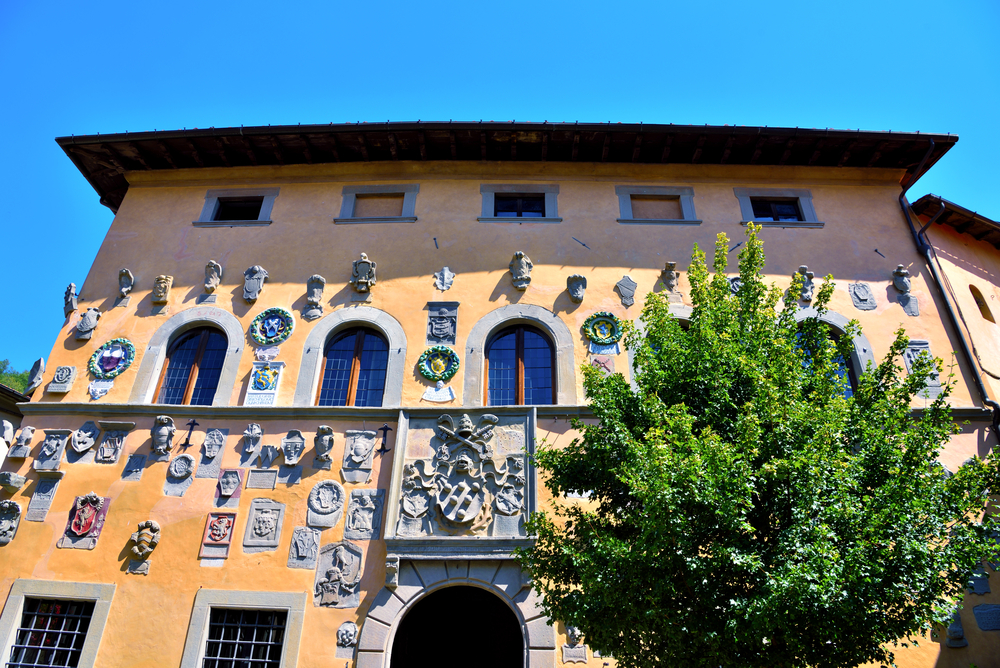
A picturesque village, Cutigliano is both the perfect Summer and Winter retreat, thanks to its location near the ski slopes. Of note worth visiting within its walls is the Chiesa di San Bartolomeo, the Palazzo dei Capitani di Montagna and the Chiesa della Madonna di Piazza. However, we love Cutigliano for the opportunity it presents for enjoying the outdoors. Not only is it a great ski destination thanks to the nearby resorts of Abetone and Doganaccia (which is linked by cable car to Cutigliano), but it is also fantastic for mountain biking and hiking.
Florence

Florence needs no introduction. Home to the Duomo, Campanile, Palazzo Vecchio, Uffizi and Ponte Vecchio to name just a few of its more famous attractions, Florence is a city you can’t help but fall in love with.
Check out our full travel guide to Florence to find out more about what to see and do in Florence on your next trip.
And take a look at our villas and apartments in Florence if you fancy a city break to this incredible Italian city.
Forte dei Marmi
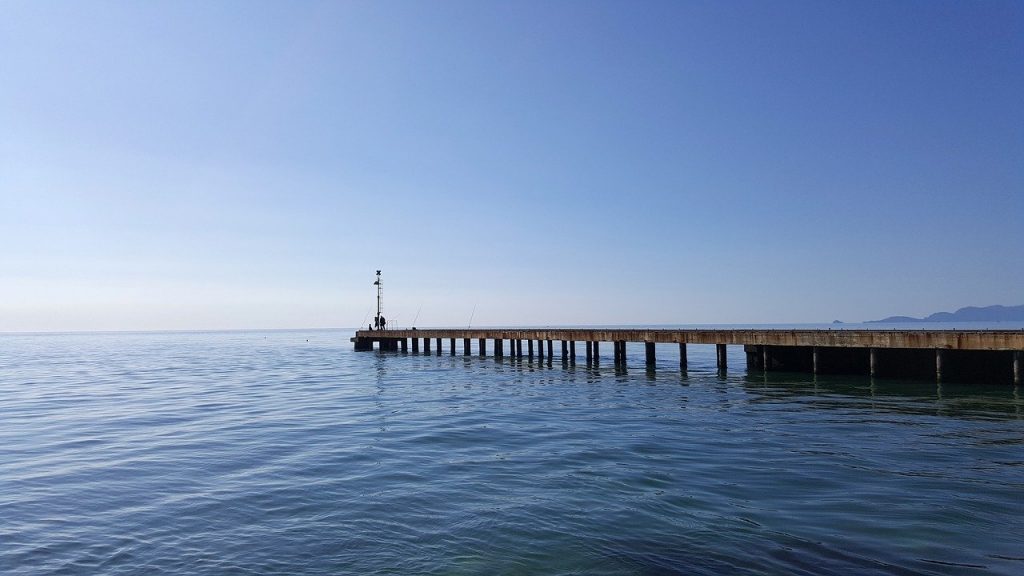
Nestled on the coast of Tuscany, Forte dei Marmi is an upmarket seaside resort, popular with rich Italians who flock to its beaches to escape the heat of the Summer sun. You’ll find the town full of elegant villas overlooking the sea and expensive boutiques and restaurants. You’ll also find a pier here where you can enjoy wonderful views out to sea and back again towards the shore. The original pier was built in 1876 and was historically used to loading marble onto the boats, but it was destroyed by the Nazis in WWII so what you see today is a postwar construction. Forte dei Marmi is also well known for its festivals and markets.
This villa in Forte dei Marmi sits within walking distance of the town’s shops and restaurants but is also just a cycle from its beaches and includes complimentary access to one of the private beach clubs.
Fosdinovo
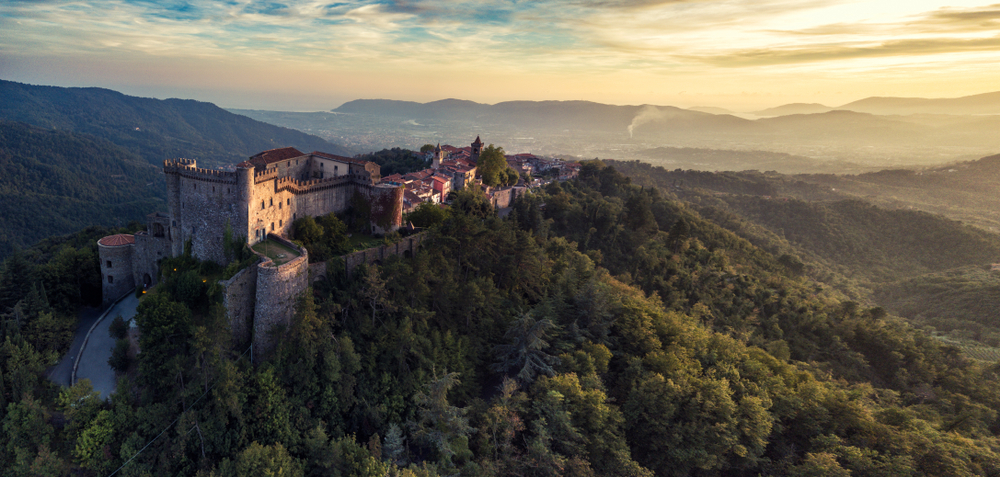
Fosdinovo is most famous for the beautiful Malaspina Castle which it is home to. Whilst the castle’s origins date back to the 11th century, it was subsequently enlarged in later centuries with the addition of towers and turrets and was then transformed into an elegant noble residence, complete with astonishing frescoed halls.
For a glimpse into Fosdinovo’s more recent history, head to the Audiovisual Museum of the Resistance which, through interviews, photographs and recordings, tells visitors the history of the WWII resistance movement in this area.
Giglio Castello

Giglio Castello is a picturesque Medieval village on the island of Isola del Giglio. The island itself is tiny, measuring just over 9 square miles and is reached via a short boat tide from Porto Santo Stefano. Giglio Castello sits approximately 400 metres above sea level and is surrounded by thick 12th century walls. Its two main sights are its fortress – the Rocca Aldobrandesca – and the Church of Saint Peter. The latter originally dates back to the 12th century but significant renovation work in the 18th century gives it a much later appearance.
Greve in Chianti
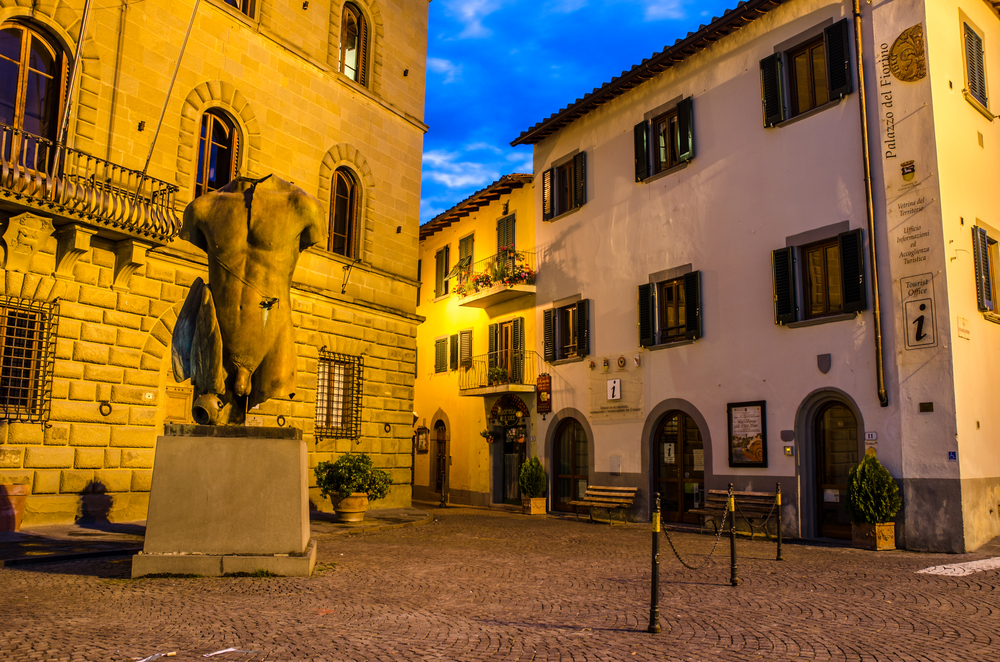
Known affectionately as the ‘gateway to Chianti’, Greve in Chianti is a lively market town popular with tourists. Its large main square – Piazza Matteotti – is at the heart of the town and it’s where you’ll find numerous food shops and enoteca. Not surprisingly, there are plenty of places to sample the wonderful wine that this region produces. In September, an annual wine festival is also held in the town.
Grosseto

Grosseto is a large city in Southern Tuscany. It was once ruled by the Spanish, but control passed to the Medici family in the 16th century, after which Grosseto’s defensive walls were built, the area around the city was drained and road networks were established. The hexagonal 16th century walls can still be seen today and make a very pleasant tree-lined walk and public park.
Buildings of note include the Romanesque Cathedral of San Lorenzo, the Palazzo Aldobrandeschi (which dates back to Medieval times but which was almost entirely re-built in the 19th century neo Gothic style), the Church of San Francesco and the Church of San Pietro (the oldest religious institution in the city). A visit to Grosseto would also not be complete without seeing its main square – Piazza Dante where you can find the Canapone monument, a sculpture by Luigi Magi. If you’re interested in history, then you may also want to consider a trip to the Museum of Maremma Archaeology and Art, full of artefacts from Etruscan to Medieval times.
Livorno
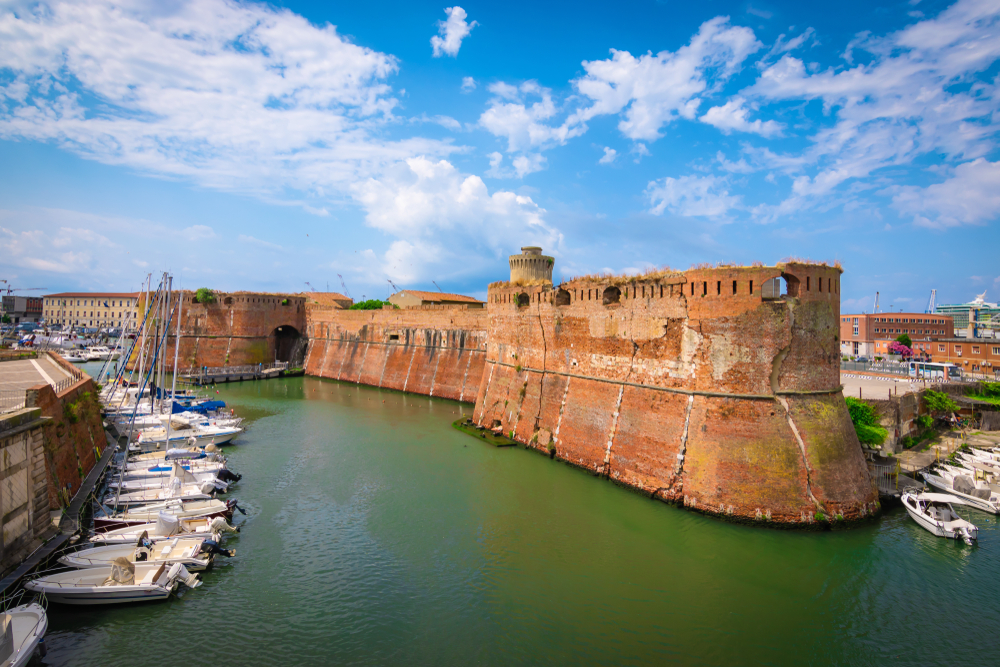
Situated on the Western coast of Tuscany looking over the Ligurian Sea, Livorno is a modern Tuscany city, affectionately known as the ‘Venice of Tuscany’ thanks to its network of canals. Dating back to prehistoric times, much of what you see today owes thanks to the construction overseen by the Medici family in the 16th century. The city also has a large Jewish community and appointments can be made to visit the striking synagogue there.
One of our favourite areas of the city is La Venezia though, a Venetian-style quarter with canals and bridges that are reminiscent of Venice. Every Summer, this area also plays host to the Effetto Venezia, evenings filled with music and theatre performances well into the night.
Loro Ciuffenna
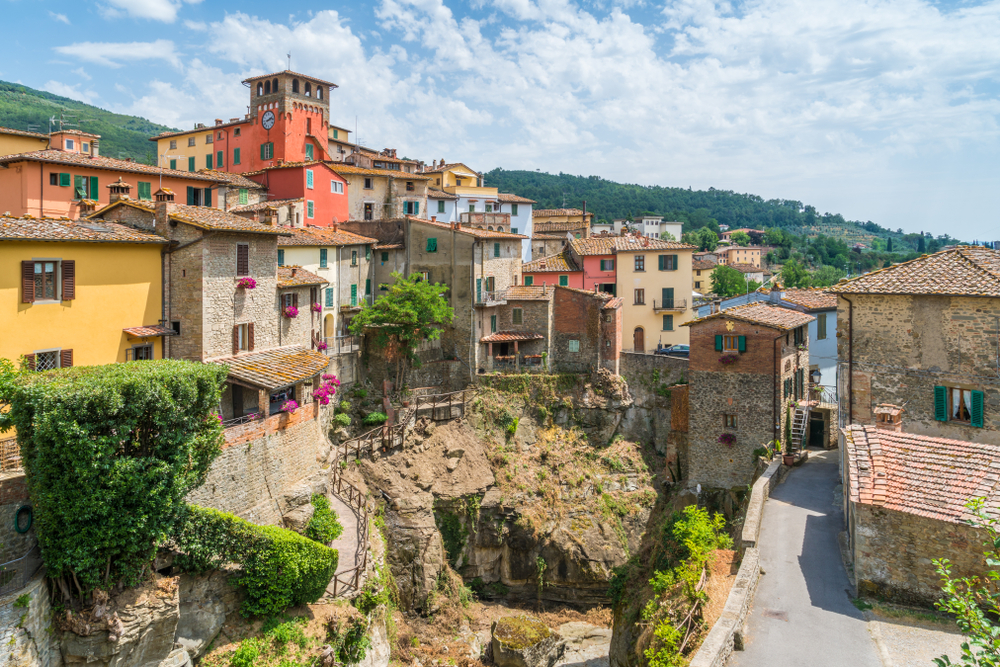
Yet another Tuscan village with ancient origins going back to the Etruscan period, the village was originally just called Loro (meaning laurel) but its name was extended to Loro Ciuffenna in the second half of the 19th century. Incidentally, Ciuffenna is the name of the river that cuts the town into two. This river has played a vital role in the town’s history, providing essential water for the mills that are situated here. Today, it’s possible to visit one of the oldest of these water mills – Il Mulino – dating back to 1100 but which remains in use today, grinding chestnuts into flour.
Whilst here, take the time to admire the nearby arched Romanesque bridge which is widely believed to have replaced a Roman bridge. Also worth a visit is the Church of Santa Maria Assunta and the Museum of Venturino Venturi which you will find in the town hall in the town’s main square. Venturi is a local artist who was born in Loro Ciuffenna in 1918 and who is famous for his sketches, paintings and ceramic work.
Lucca
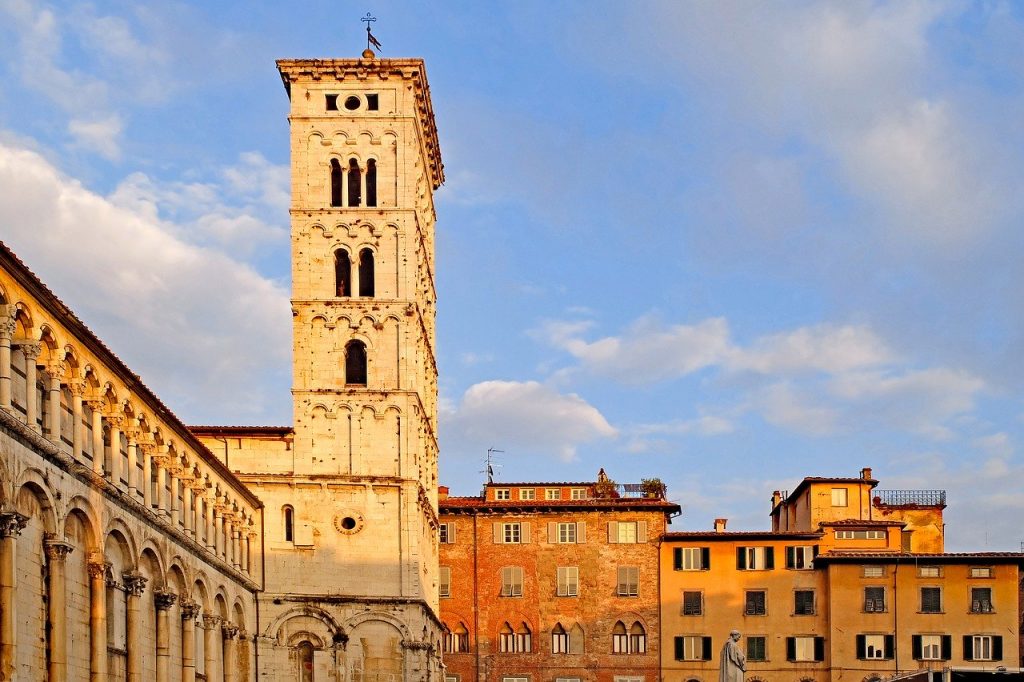
Lucca is one of our favourite cities in Tuscany. One of the city’s main attractions is the old walls. Visitors can take a stroll or cycle for up to 4 km on top of these walls which have been turned into an attractive promenade, filled with green grass and trees. Families with children will also find playgrounds here, whilst nature lovers can enjoy the botanical gardens.
Lucca is also famous for the plethora of churches within its walls. The ‘city of one hundred churches’, Lucca has too many religious institutions to mention, all in a variety of architectural styles. Some of the most noteworthy include the Duomo (home to some superb artistic masterpieces) and San Michele al Foro (St Michael’s Church).
Other attractions not to be missed include the oval shaped Piazza dell’ Anfiteatro (which traces the shape of a Roman amphitheatre). Whilst the amphitheatre may no longer exist, the square has maintained its shape and takes us back to when the Roman times. Also worth a visit is the Torre Giunigi, a tower with trees growing from its top. It is possible to climb to the top of the tower to admire the roof garden, built by the Guinigi family as a symbol of Lucca’s rebirth while under their control. Finally, the Basilica of San Frediano and Lucca’s Clock Tower should also be on your Lucca bucket list and it’s worth just spending a couple of hours wandering the streets to admire the many elegant villas and towers that date back to the 12th to 16th centuries. If you fancy shopping whilst in Lucca, then the main shopping street is Il Fillungo.
There is never a bad time to visit Lucca, but you may want to consider visiting during the Lucca Summer Festival which takes place each July when you can enjoy concerts by internationally renowned artists. The Lucca Comics and Games event held in late October and early November is also a fun event in the city.
Villa Pinoni is a luxury villa in Lucca, perfect if you want to discover Lucca for yourself on your next holiday in Tuscany.
Lucignano
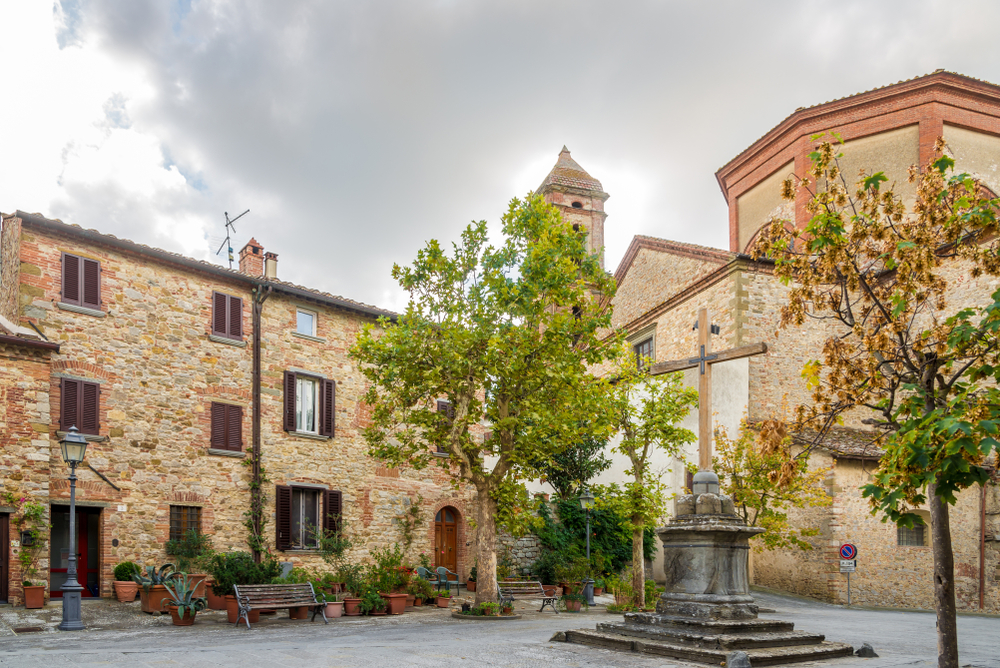
Yet another of the Tuscan villages on the list of ‘borghi piu belli d’Italia’, Lucignano is a small Medieval hilltop village best known for its oval shape, made up of concentric rings typical of Medieval town planning designs. Take the time to walk around Lucignano’s ancient walls and enter the old town via one of its four gates – Porta San Giovanni, Porta San Giusto, Porta Sant’Angelo and Porta Murata. Inside, there are two main streets – Via Roma and Via Matteotti. The former is lined with the smaller, poorer dwellings of the lower classes whereas the latter is home to the homes of the nobility. A network of roads lead from these two main roads up to the top of the town where you will find the Palazzo Comunale (town hall), the church of San Francesco and the Collegiate.
Massa Marittima
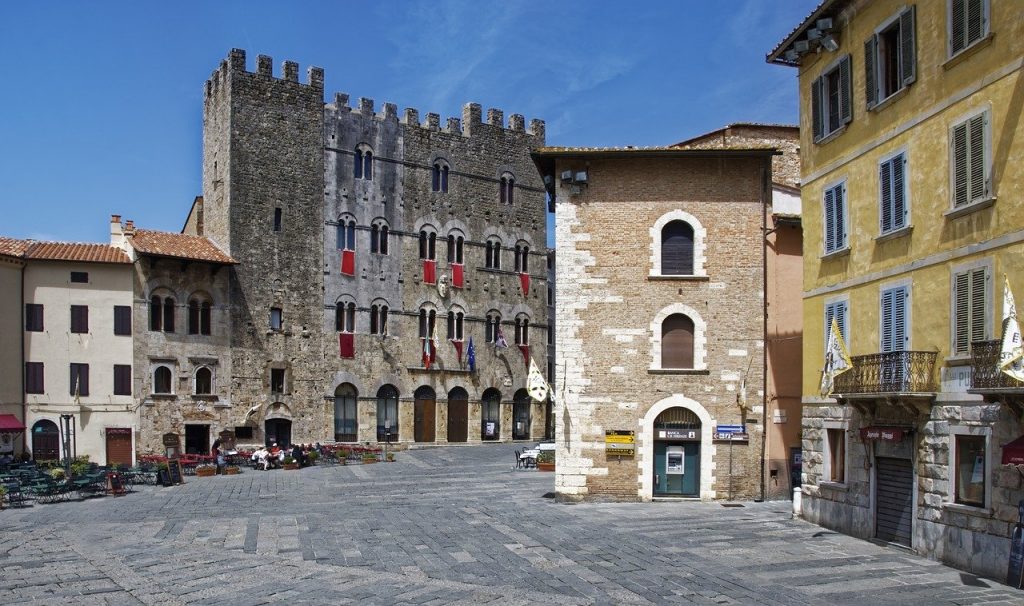
Situated in the Maremma in Southern Tuscany, Massa Marittima is a town that dates back to the Etruscan period but whose existing buildings date back to the 13th century. You can find out more about the ancient history of the town in the archeological museum, housed in the Palazzo del Podesta.
However, the main attraction in Massa Marittima is certainly its 13th century Romanesque Cathedral – the Cathedral of San Cerbone – in Piazza Garibaldi, the heart of the town. The cathedral is dedicated to Saint Cerbonius. Inside you will find five panels each depicting a story from the life of the saint. One shows the saint surrounded by geese as legend has it that the saint invited a flock of geese to follow him to Rome as a gift for the pope which they supposedly did!
What you may be less expecting to find in Massa Marittima is a mining museum. However, the history of the town is linked to mining. People have been extracting copper, lead, tin, silver and iron from the surrounding hills – Colline Metallifere – since Etruscan times and in the 1300s the town was called ‘Massa Metallorum’. Head to the museum galleries 700 metres deep in the hillside rocks where former miners have set up a museum to educate visitors on their methods and working environment. These tunnels have existed since the Middle Ages when the stone was used to build with but, more recently, they were also used in WWII as a refuge.
Finally, before leaving the town, take the time to climb the fortress and tower (Cassero Sienese and Torre del Candeliere) where you can enjoy wonderful views over the city. And check out the Fonti dell’ Abbondanza, an ancient font with a rather unusual fresco depicting a tree whose leaves are replaced by men’s genitals which women are gathering up below!
Montaione

Another picturesque small hilltop town, Montaione’s most notable buildings are the Palazzo Pretorio and the Church of San Regolo, both of which are found in the central square. The former has had a number of uses over the years but is now home to the Municipal Archaeological Museum whilst the latter is home to a number of important artworks dating between the 13th and 19th centuries.
Montalcino
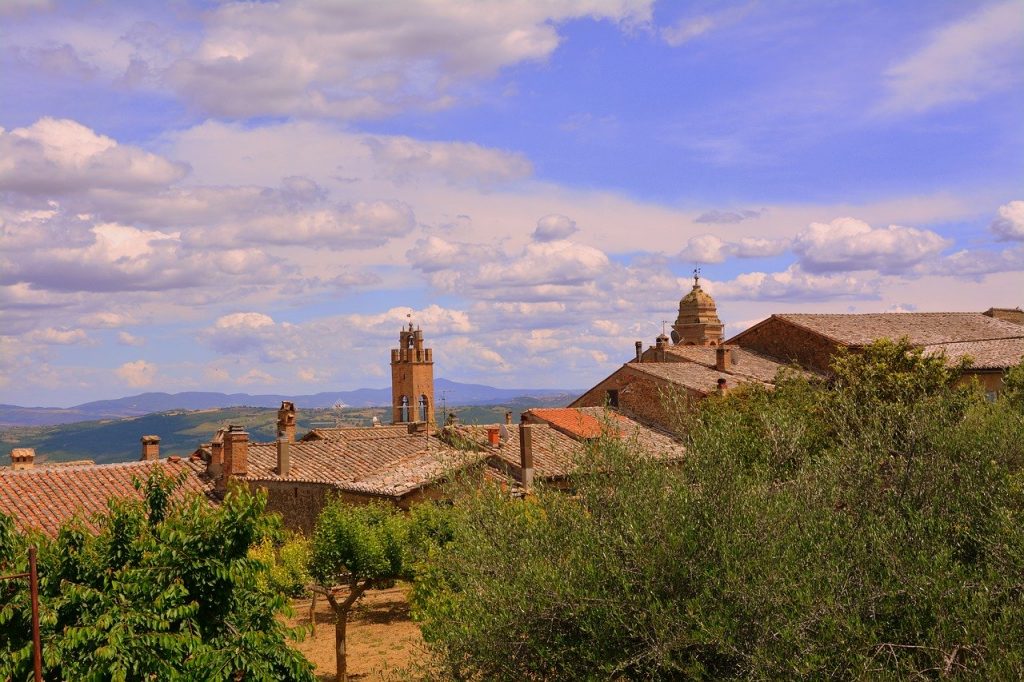
Famous throughout the world for its production of Brunello wine, Montalcino is a picturesque hilltop town. No visit to the town would be complete without sampling some of its local wine in one of the many enoteca.
Also worth seeing is the fortress (rocca) which dominates Montalcino. Built in the mid 14th century, these days the fortress is used as the venue for a number of festivals and events each year. These include the annual Jazz & Wine Festival held each July. Even if you’re not visiting during one of these events, don’t miss the opportunity to enjoy the spectacular views from its ramparts. The other major landmark in the town is the clock tower in the Palazzo del Popolo, Montalcino’s main square.
A ticket to the fortress will also give you access to the Museo Civico e Dioceziano, where you can find plenty of artefacts that bring the history of Montalcino to life. If you enjoy time in museums, then Montalcino is also home to the Museo del Vetro (glass museum) where you can learn about the history of glass making starting from Egyptian times.
Montecarlo
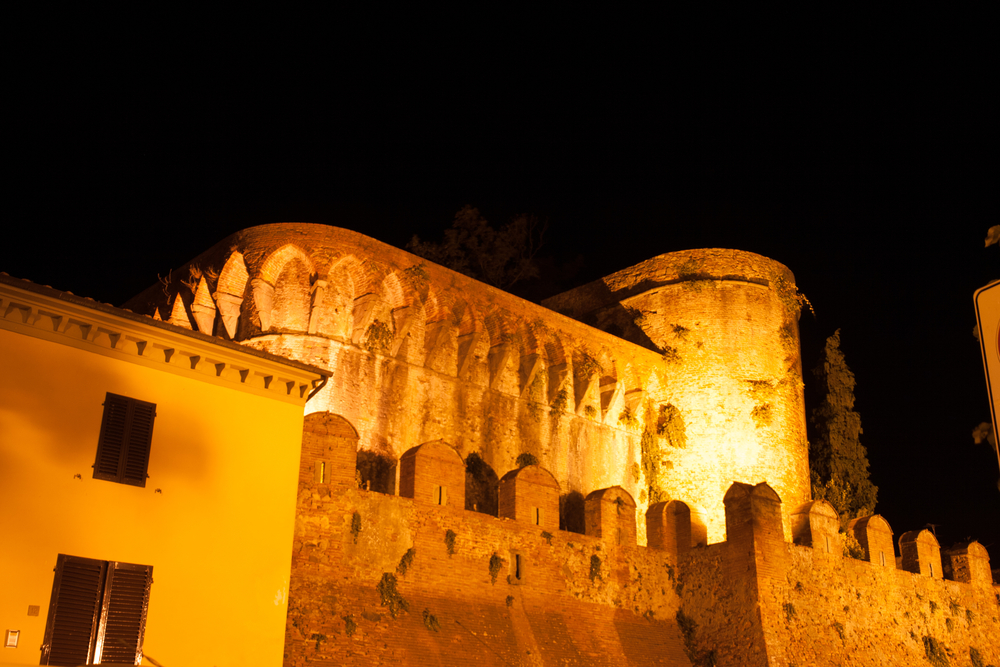
Montecarlo is another of Tuscany’s towns dominated by its wine-making. Surrounded by rolling hills and vineyards, it’s worth spending an hour or two walking in the countryside around it. Take a walk from Montcarlo to San Martino in Colle and you’ll find an ancient oak tree, nicknamed the ‘Witches Oak’ since legend has it that witches used to gather around it to perform their rituals.
Perched on a hilltop, the city itself is surrounded by thick walls and is dominated by its large triangular shaped fortress built during the 14th to 16th centuries – the Rocca del Cerruglio. This boasts a main tower (mastio) and two square-shaped towers that connect it to the curtain walls, known as the Tower of the Apparition and Tower of Saint Barbara. Other sights include the Chiesa Collegiata di Sant’Andrea), the church of Pieve di San Piero in Campo and the town’s theatre – Teatro dei Rassicurati – which Puccini frequently visited.
Montefioralle
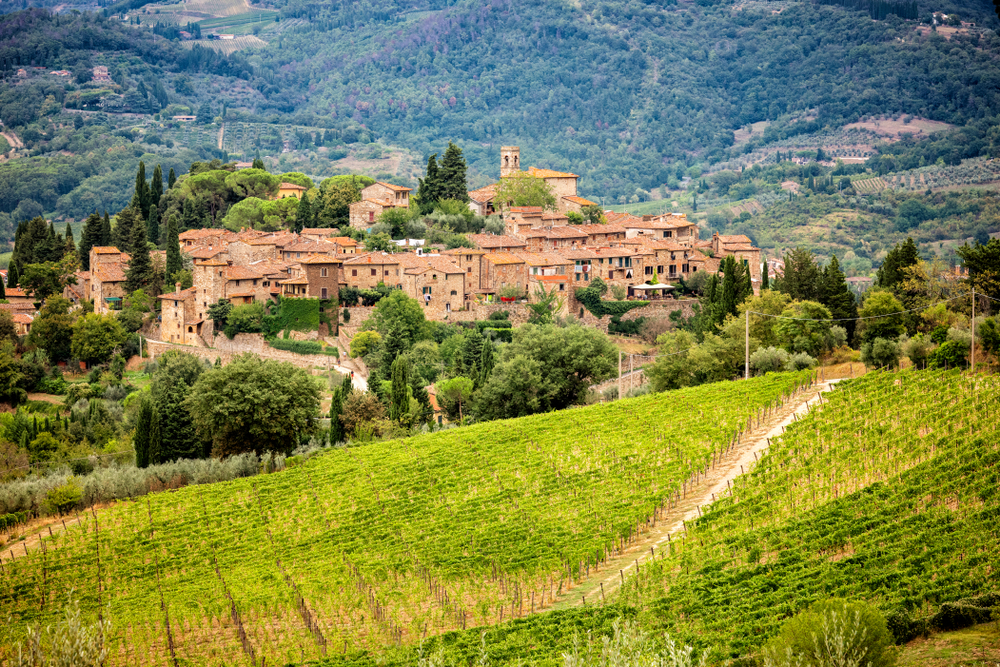
A charming town still set within thick, octagonal shaped defensive walls, for us part of Montefioralle’s charm is the fact that it’s almost free of cars. It also happens to boast some excellent restaurants! Head throguh the narrow streets lined with stone houses to the town’s summit to where you will find the Church of Santa Stefano. And if you need to burn off a delicious lunch or dinner, take the 2 kilometre long walk along the Via del Castello to enjoy some wonderful views over the Chianti countryside.
Montefollonico
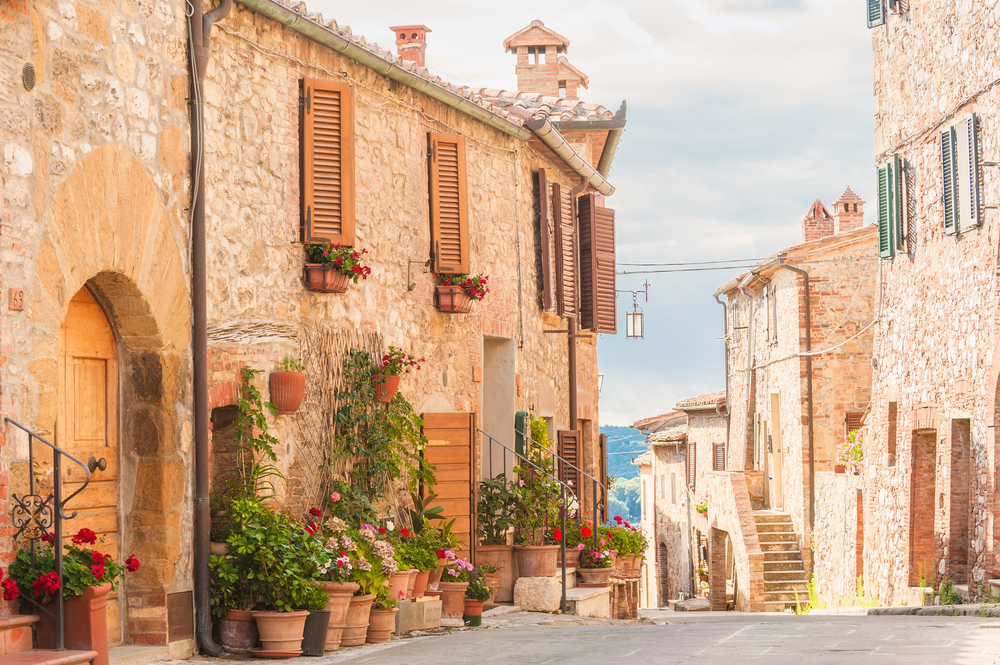
One of Tuscany’s hidden gems, Montefollonico is characterised by narrow, winding alleyways. It has burst out of its original city walls but is a charming place to visit. One of its most famous events is the annual Palio dei Somari. Held every May, this is a donkey riding competition between the eight different quarters of the village, all dressed in traditional attire.
Montemerano
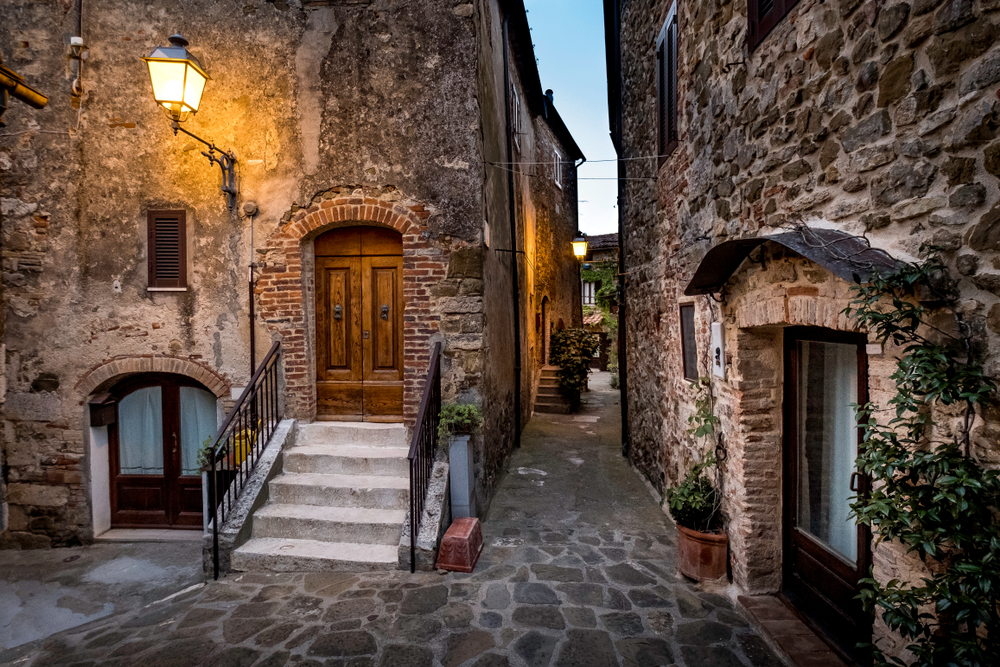
Montemerano is a 12th century walled town built by the Aldobrandeschi family and characterised by narrow lanes, pretty courtyards and stone houses. Entrance to it is via any one of three gates. Its main square – the Piazza del Duomo – is the heart of the town. The most important sights are the deconsecrated 12th century Pieve of San Lorenzo, the 15th century Church of Madonna del Cavalluzzo found just outside the walls and the 14th century Church of San Giorgio (dedicated to Montemerano’s patron saint). Incidentally, this is where you will also find the Madonna della Gattaiola (Madonna of the Cats), so-called as a former priest cut a crude cat flap into the bottom of the fresco to allow his feline friends to enter the church!
Whilst here, you may want to visit nearby Saturnia just a couple of kilometres away, famous for its hot springs.
Montepulciano
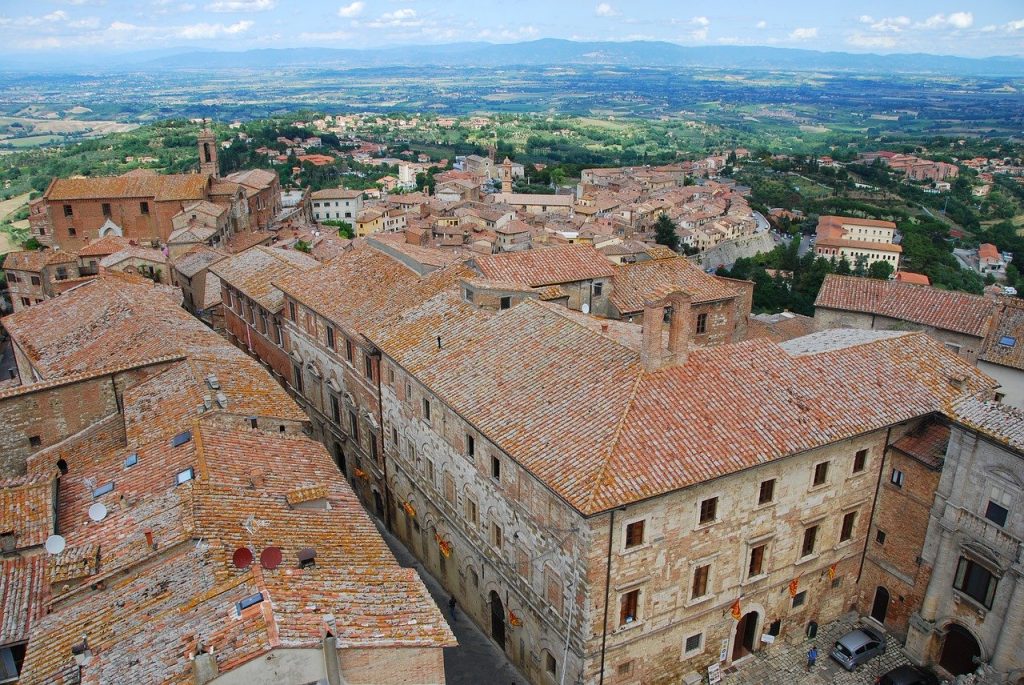
Montepulciano is a pretty town, full of churches, palaces, picturesque alleyways and idyllic piazzas. The Piazza Grande sits at the heart of Montepulciano. Here you’ll find the Palazzo Comunale and Cathedral, both worth a visit, as is the Temple of the Madonna di San Bagio which sits beneath the Medieval walls of the town. But most head to the town to try the famous Vino Nobile, one of the top Tuscan wines.
In more recent times, Montepulciano has attracted more visitors than ever due to the filming of the filming of the vampire saga sequel to Twilight here. You’ll also find it busiest during key events during the year such as the Barvio delle Botti in August. This is when you’ll find barrel racing competitions taking place!
Monteriggioni
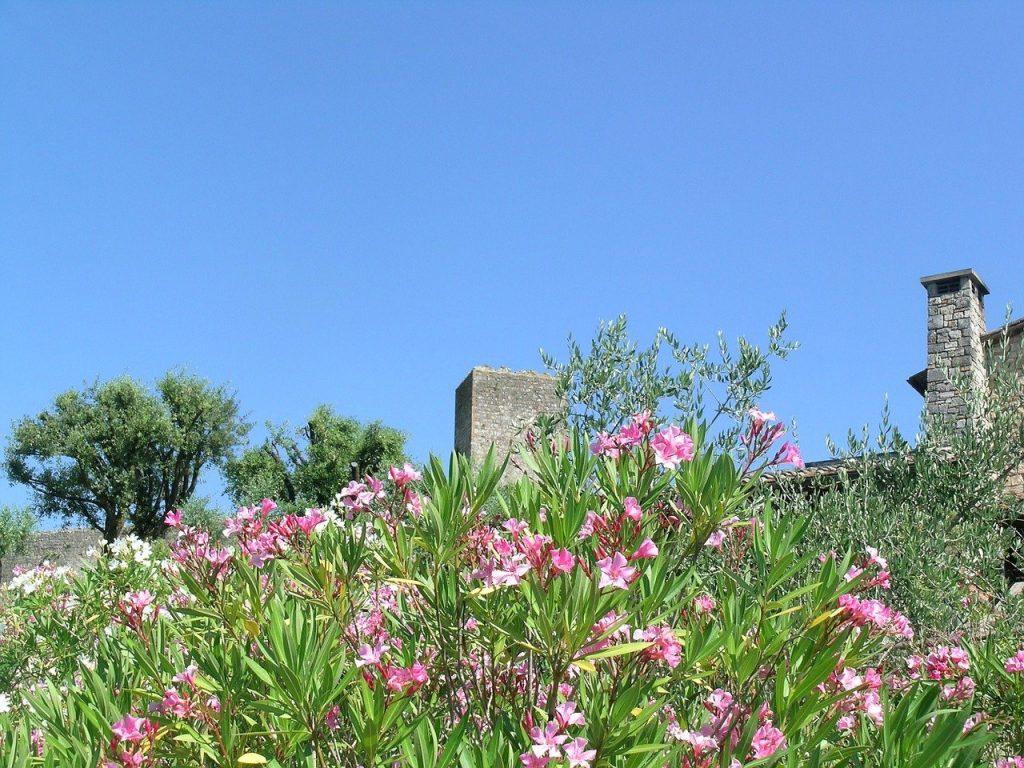
One of the most important walled towns in Tuscany, Monteriggioni is a perfect circle on top of a hill with impressive 13th century towers that can be seen from miles around and which featured in Dante Alighieri’s Divine Comedy. If you’re a fan of the Assassin’s Creed game, then you’ll probably recognise the outer walls as the setting for where the feats of Ezio Auditore are set. Buy a ticket to enjoy a short stroll yourself along the town walls.
The castle was originally built by the Sienese for defensive purposes. Two gates – the Romea Gate and Florentine Gate – provide access to the town. The main square is the Piazza di Roma, home to the 13th Church of Santa Maria Assunta. Also worth a visit is the Armoury Museum where you can enjoy an insight into weapons and armour from Medieval and Renaissance times. You even have the opportunity to try some on for yourself!
Try and visit in July when the Medieval Festival of Monteriggioni takes place. At this time, the streets are filled with residents in Medieval grab, with plenty of entertainment for all the family to enjoy. As well as giving visitors a small glimpse into what life used to be like, you’ll also have a chance to taste the Medieval flavours too, with local restaurants offering dishes of Medieval times. Exchange your euros with Medieval coins to spend!
Montescudaio
Head to Montescudaio’s impressive castle to enjoy some impressive views from its only remaining watchtower – the Guardiola – across the Cecina plains to the Tyrrhenian Sea and its islands. More beautiful views can be enjoyed from the Church of Santa Maria Assunta in the Piazzale del Castello. The other church not to miss is the Church of Santissima Annunziata whilst its palaces are worth admiring too – the Palazzo Guerrini is now the town hall. And finally, spend time in the heart of the town in the Piazza Matteotti. This was the home of the famous Italian sculptor, Italo Griselli (1880 – 1958).
Palazzuolo sul Senio
An absolutely charming village that dates back to the 12th century. Its cobbled streets are a far cry from the busy pace of modern life. There are a couple of excellent museums in the town. These include the Archeological Museum of the Upper Mugello situated in the Palazzo del Capitani which details the history of man in this region from pre-historic times through to the Middle Ages. The palace also plays host to the town’s second museum – the Antonio Poli Museum of Mountain Folk which educates visitors on the life and work of the local population in bygone years.
Peccioli
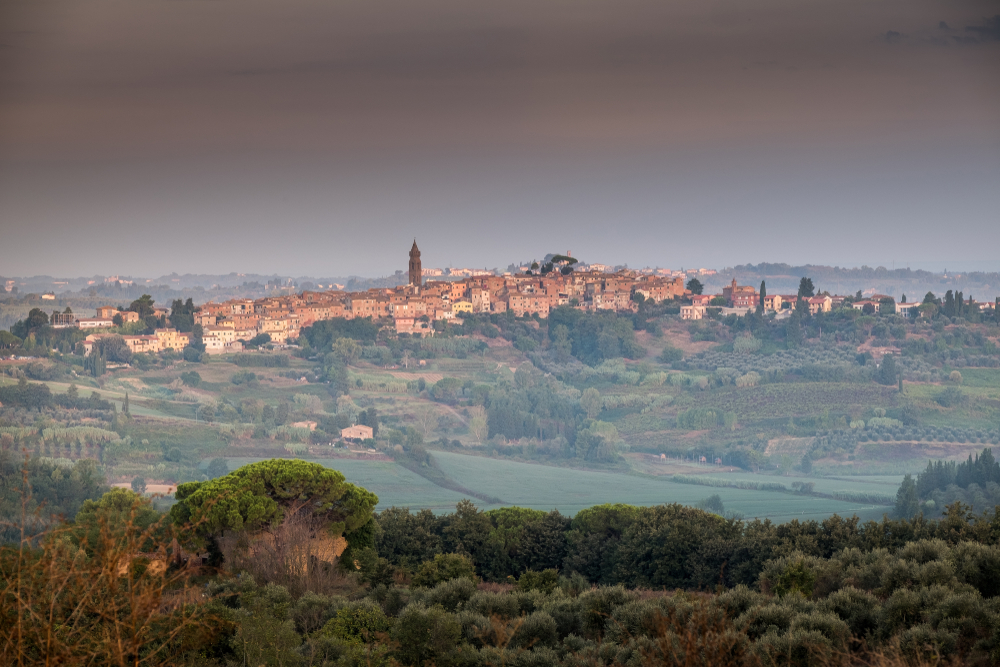
A beautiful village, Peccioli was awarded the Bandiera Arancione (orange flag) by the Touring Club Italiano. It is easy to spot from a distance thanks to the tall, narrow bell tower of the 11th century Church of San Verano that rises above the rest of the town’s buildings. The town centre is absolutely charming and it’s well worth spending an hour here just strolling around its streets.
There are four museums in the town to visit. The first of these – the Museum of Russian Icons – is in the Palazzo Pretorio. The museum exists thanks to the generosity of journalist Francesco Bigazzi, who donated his collection of 19th and 20th century icons to the Peccioli municipality. There is also an Archeological Museum and a Museum of Sacred Art. In addition, it’s worth seeking out the 11th century Abbey of San Verano and the Church of the Madonna del Carmine.
Head to the hills just outside the town and you will find the Peccioli Theatre in the Fonte Mazzola Amphitheatre. This has a rich programme of annual events performed in both Italian and English.
Petroio
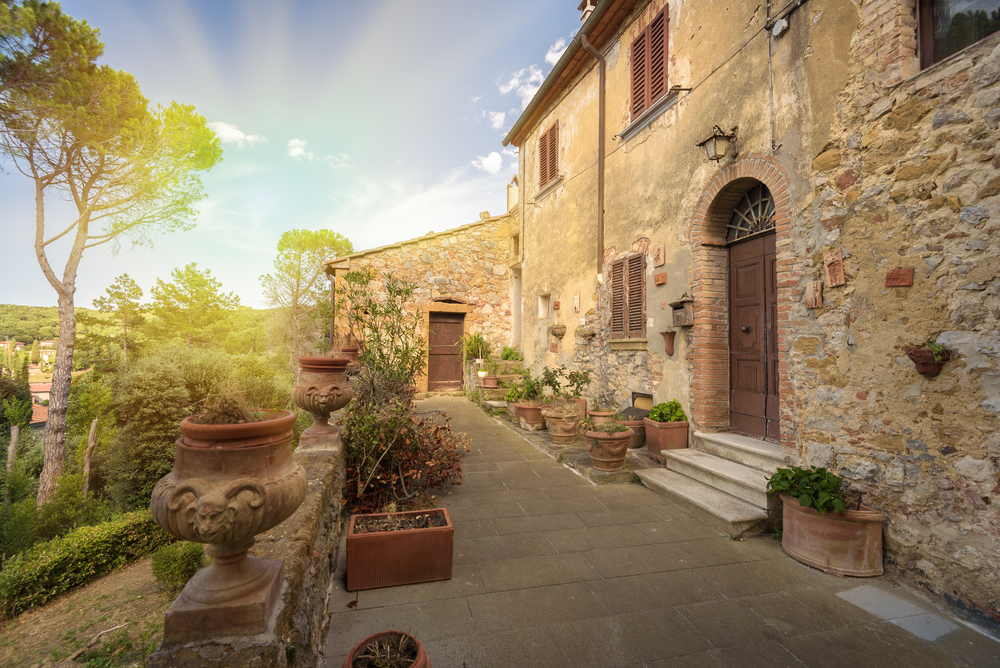
Petroio is the Tuscan town of terracotta. The ancient art of terracotta manufacturing has dominated the economy of this town for centuries. Learn more about it in the Museum of Terracotta.
Pienza

Pienza is one of Italy’s 55 UNESCO world heritage sites and is a small but beautiful village. A Renaissance utopia, thanks to Pope Pius II who, in the 15th century, with the help of architect Bernaro Rossellino, transformed his birthplace. The piazzas and palazzi within Pienza are all organised according to humanist principles. The buildings of particular note are the Cathedral of Santa Maria Assunta (Duomo), the Palazzo Piccolomini and the Palazzo Borgia.
With views of Pienza from its pool and gardens, this stunning villa in Tuscany is perfectly placed if you want to discover more about this UNESCO world heritage site.
Pisa
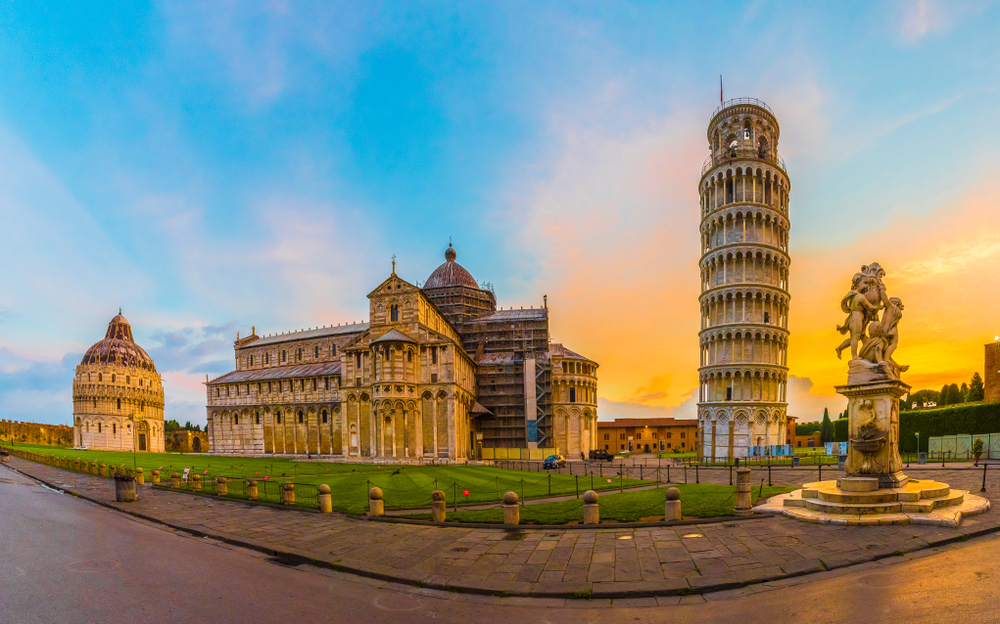
No visit to Tuscany would be complete without a trip to Pisa. Whilst the Leaning Tower may be by far its most famous attraction, there are plenty of other attractions to be explored in the city. Find out more in our Pisa travel guide.
Pistoia
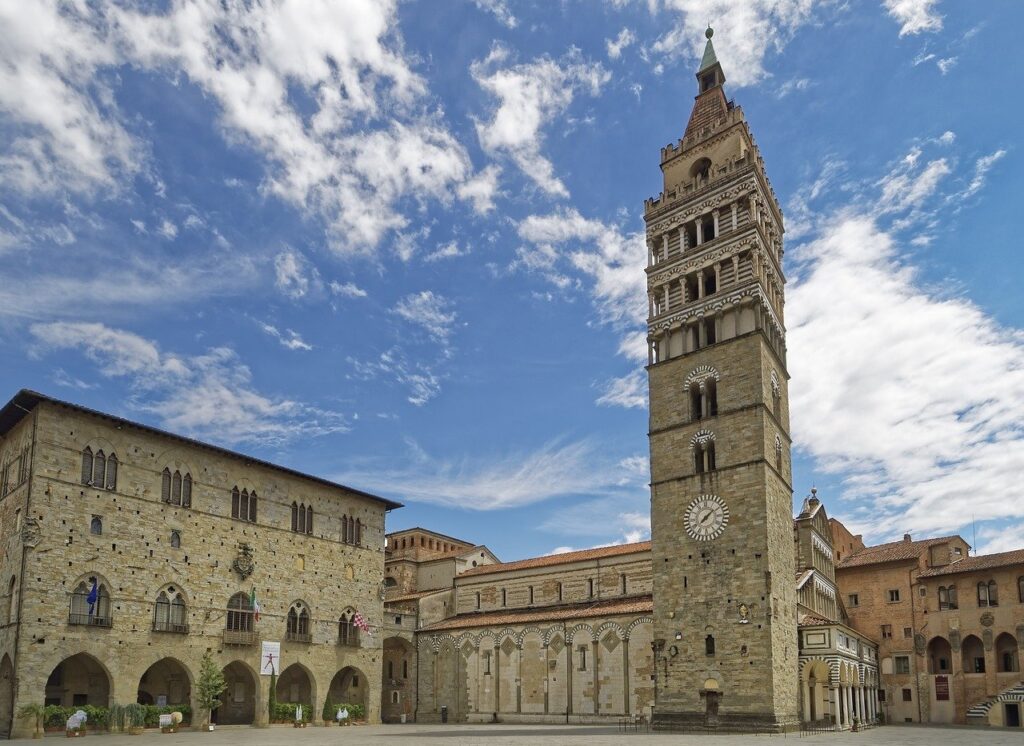
Situated halfway between Florence and Lucca, Pistoia is one of Tuscany’s hidden gems. It may not be as grand as its more famous neighbour Florence and it’s just half the size of Lucca, but it’s home to all the ingredients of a good Tuscan city. Its history stretches back as far as Roman times and there is much to see and do here. The Piazza del Duomo and the smaller Piazza della Sala are home to numerable buildings worthy of a visit including the Cattedrale di San Zeno (Duomo), Medieval Baptistry and bell tower as well as the Church of San Giovanni Fuorcivitas, with its striking dark green and white marble-striped exterior. And another of its churches – the Basilica of the Madonna dell’Umiltà – further outside the town’s centre is even reminiscent of the Duomo in Florence. Other buildings of note include the Palazzo Comunale (Town Hall), Magistrates’ Palace and the Ospedale del Ceppo.
If you fancy exploring Pistoia for yourself, then this unique 5 bedroom Tuscany villa rental actually enjoys incredible views that stretch as far as Pistoia.
Pitigliano
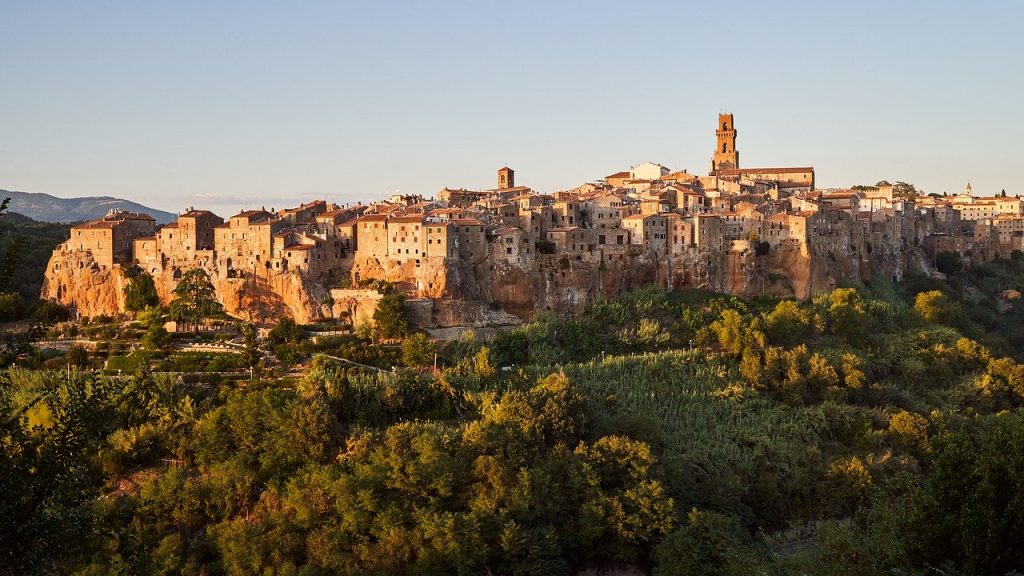
More affectionately known as ‘Little Jerusalem’ thanks to the size of the Jewish community who started to move to the village in the 1500s, Pitigliano’s skyline is unmistakeable. It was once well known as one of the liveliest Jewish ghettos in Italy but, unfortunately, during the Fascist era, these Jews had to go into hiding in the surrounding countryside and the Jewish community has been slowly dissolving since the end of WWII. The Jewish quarter of Pitigliano is certainly worth exploring. Here you’ll find a synagogue, a Hebrew cemetery, a kosher oven where unleavened bread was baked and a cellar where kosher wine was produced as well as a kosher butcher shop and baths. All are open to the public.
Some of the other main attractions include the 14th century Palazzo and Fortress Orsini now home to a museum, the Cathedral of Saints Peter and Paul, the Church of San Rocco, the 16th century aqueduct originally constructed by the Medici family, as well as the towns walls and gates.
However, there are things to see not just above ground but also below ground in Pitigliano. Visitors can enjoy a walking tour of the underground cellars that are dug beneath each house. These caves date back to Etruscan times when they would have been used as tombs but more recently were used to store wine, keeping it at a constant temperature.
Pomarance
The origins of Pomarance go as far back as Neolithic times. In the early 20th century, archeologists discovered Neaolithic artefacts here (now on display in Florence), and later went on to discover many Etruscan tombs too. However, the town was also important in Medieval and Renaissance times. The town gave its name to a notable Renaissance artist – Pomarancio – whose works can be admired in the Church of San Giovanni Battista, Palazzo Pretorio and the Rocca di Silano.
Poppi
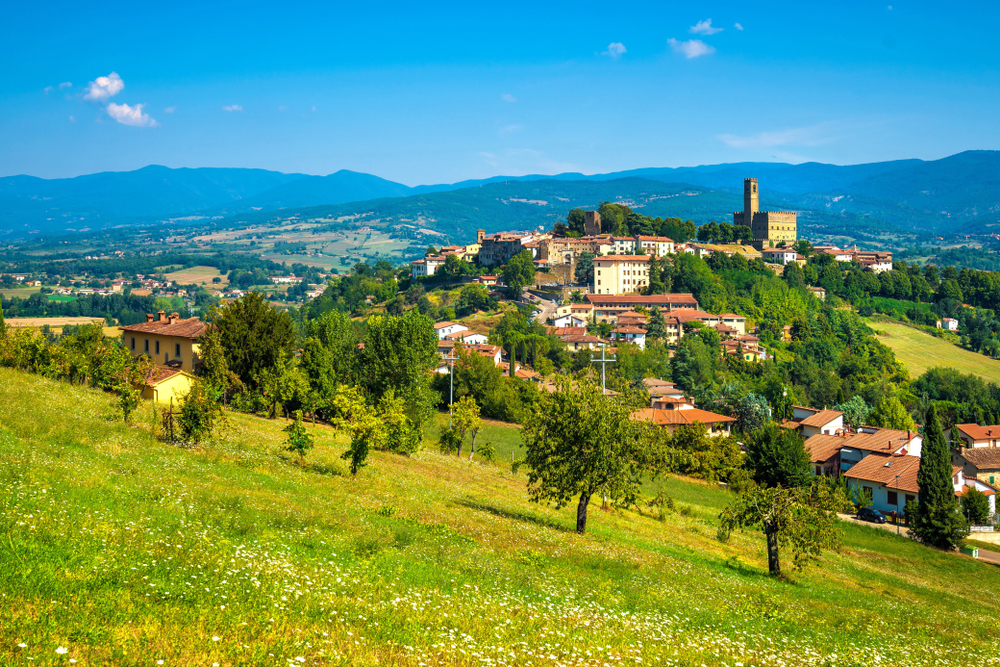
A perfectly preserved walled city, Poppi is dominated by its magnificent 13th century castle, once home to the Guidi family. The thin tower of the castle is remarkably similar to the one in the Piazza Signoria in Florence and, in fact, some have said that it provided the inspiration for the design of the Palazzo Vecchio. Another notable feature of the castle is its courtyard with its splendid intricate staircase, as is the Chapel of Conte Guidi with its series of remarkable 12th century frescoes by Taddeo Gaddi. Finally, also of note is the castle library – Libreria Rilliana – whose hundreds of Medieval manuscripts were generously donated by the Rilli-Orsini family.
Poppi has a couple of other sights well worth seeing. The first of these is the Church Oratorio della Madonna del Morbo, so called as it was built in the early 17th century as a way of thanking god for sparing the residents of Poppi from the plague. And, secondly, there is the Abbey of San Fedele. This is where you will find the crypt containing the remains of the Hermit San Torello who supposedly performed a series of miracles including saving a boy from a wolf. Incidentally, head through the Porta San Fedele near this church to enjoy some fantastic views over the castle.
And, if you have time to venture outside the walls of the town, not far from Poppi is the Camaldoldi Hermitage founded in 1012 by Saint Romauld.
Populonia
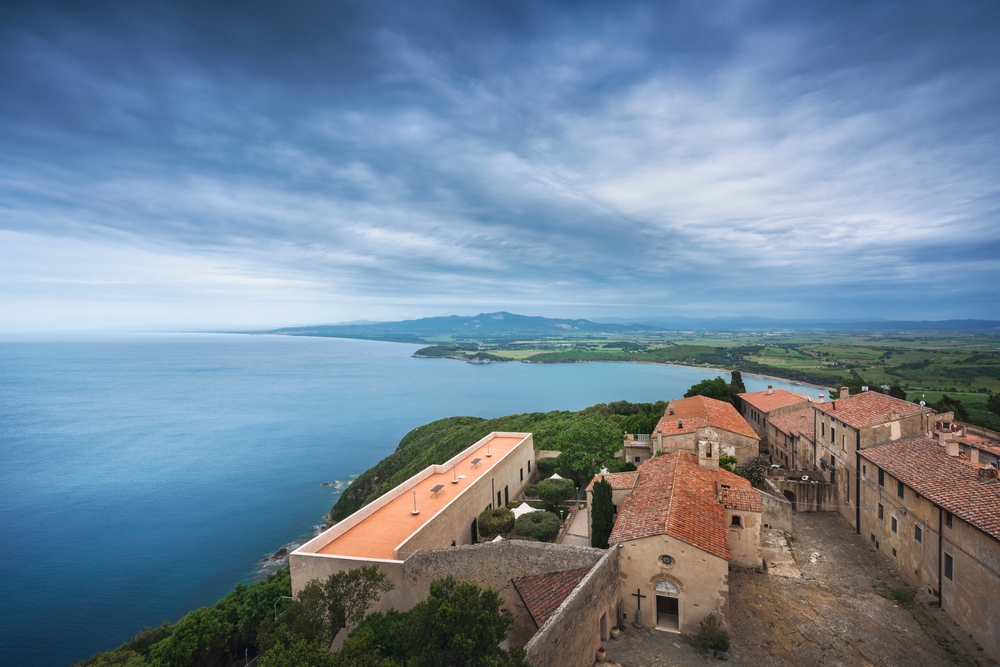
Once the only Etruscan city on the coast, Populonia’s ancient past is still visible today in the remains of its walls and Roman buildings. Not far from the town is the Archaeological Park of Baratti and Populonia. This is essentially an open air museum dedicated to the Etruscans and Romans. It is where you will find the two Etruscan necropolises of San Cerbone and delle Grotte along with the Acropolis of Populonia home to temples, mosaics, streets and buildings of the Roman era. Also of note from Populonia’s more recent past is the early 15th century Rocca in the town. This is home to alleyways and shops.
Porto Ercole
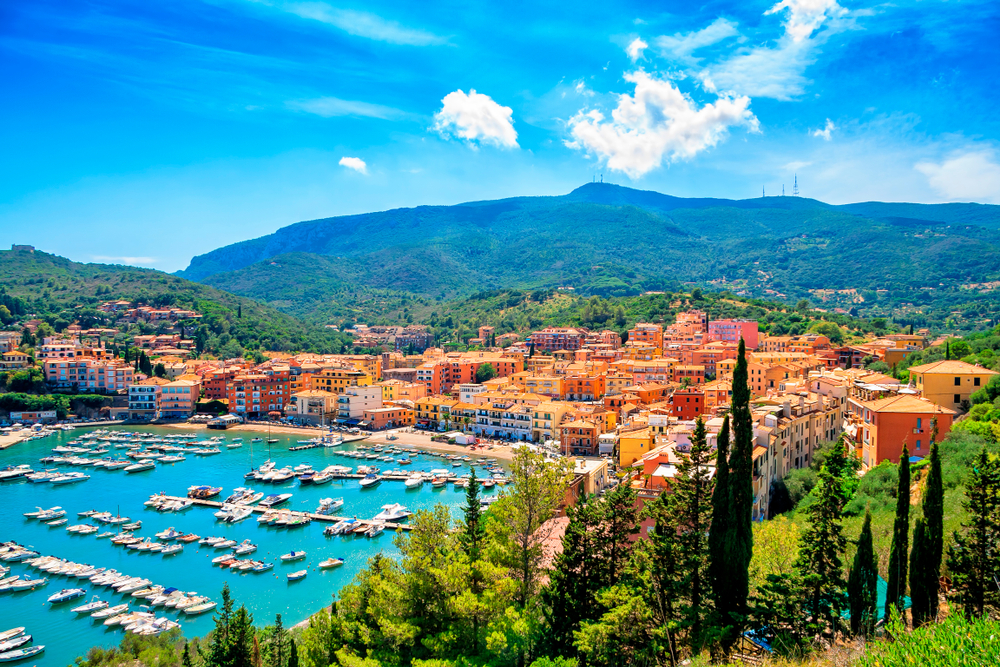
A seaside town in Tuscany, Porto Ercole is definitely one of Italy’s hidden gems sitting in one of the natural bays of the Monte Argentario peninsula. It boasts a beautiful harbour below whilst the old town sits on the hillside above.
Check out our Porto Ercole travel guide for more information about what to see and do during your visit. And if you want to stay in Porto Ercole, then this stunning 4 bedroom villa in Tuscany is within walking distance of the shops, restaurants, the marina and beaches.
Radda in Chianti
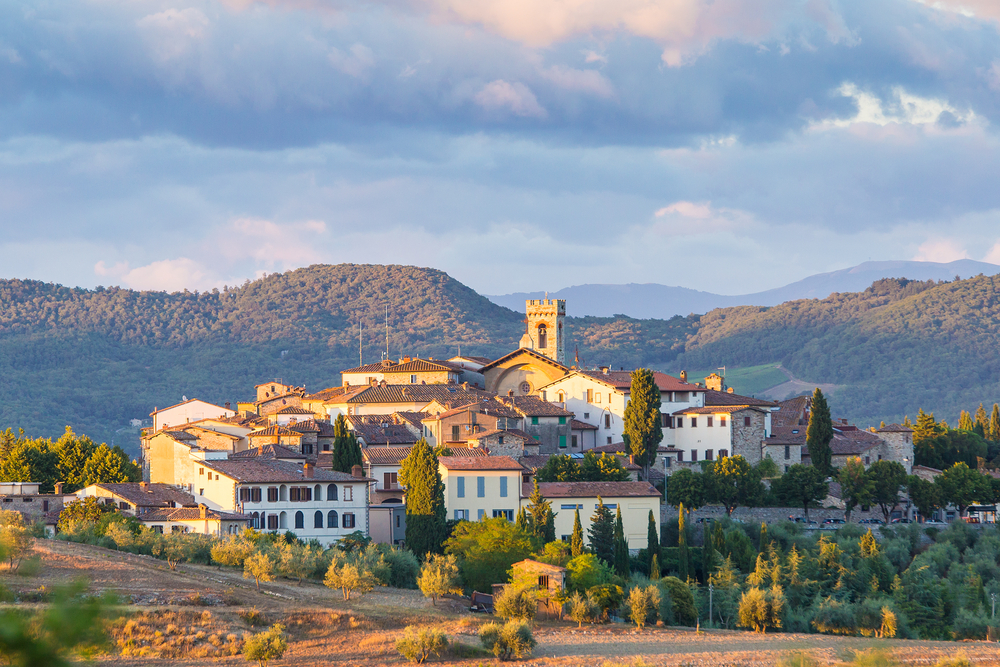
Radda in Chianti lies at the heart of the area that has been affectionately nicknamed ‘Chiantishire’ by British holidaymakers. The Grand Duke Cosimo III passed the Chianti Law in 1716, marking the first legal classification for wine grapes. In 1924, the three main towns in this official Chianti zone – Radda, Castellina and Gaiole – adopted the black rooster (gallo nero) as their symbol. Nowadays, Radda in Chianti is certainly a perfect place to sample the very best wines that this region has to offer including the prestigious Chianti Classico wines.
Some of the main sights to see inside the large defensive walls include the 15th century Palazzo del Podesta and the Church of San Niccolo that sits opposite.
Radicofani
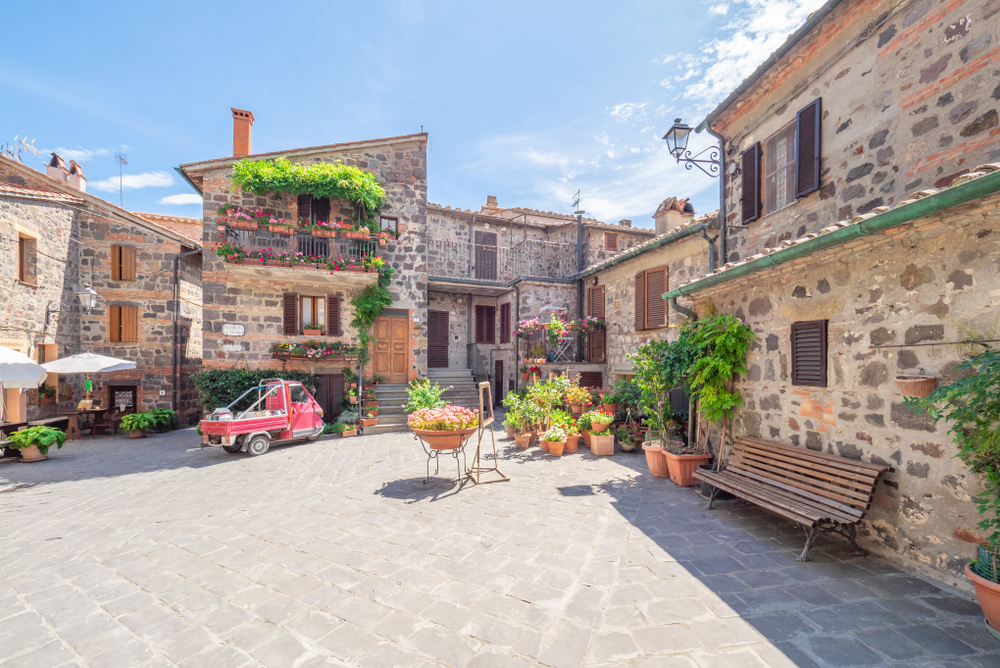
Situated in the Val d’Orcia, Radicofani is dominated by its fortress. Climb up its 37 metre tall tower to enjoy some tremendous views over the surrounding countryside and rolling hills that characterise the Val d’Orcia. Be warned though – it’s definitely not one of those with a fear of heights!
Radicofani also has a famous past resident. Nicknamed the ‘Gentleman Bandit’, Ghino di Tacco lived in Radicofani at the end of the 13th century and was an Italian Robin Hood! Ghino was born into a noble family but was banished from his home town and in 1297 he took over the Radicofani fortress. He executed a number of raids stealing and plundering. Whilst some see him as nothing more than a thief and bandit, others see him as someone who helped the poor and punished the rich and powerful.
Raggiolo

Surrounded by chestnut woods, a visit to Raggiolo is like stepping back in time. To learn more about the history of chestnut farming, head to the Chestnut Museum in Raggiolo which will take you through the history of this farming tradition along with some of the harvesting and cooking methods. The village’s other main attraction is the Church of San Michele. It is built inside the palace that once belonged to the Guidi counts.
San Casciano dei Bagni
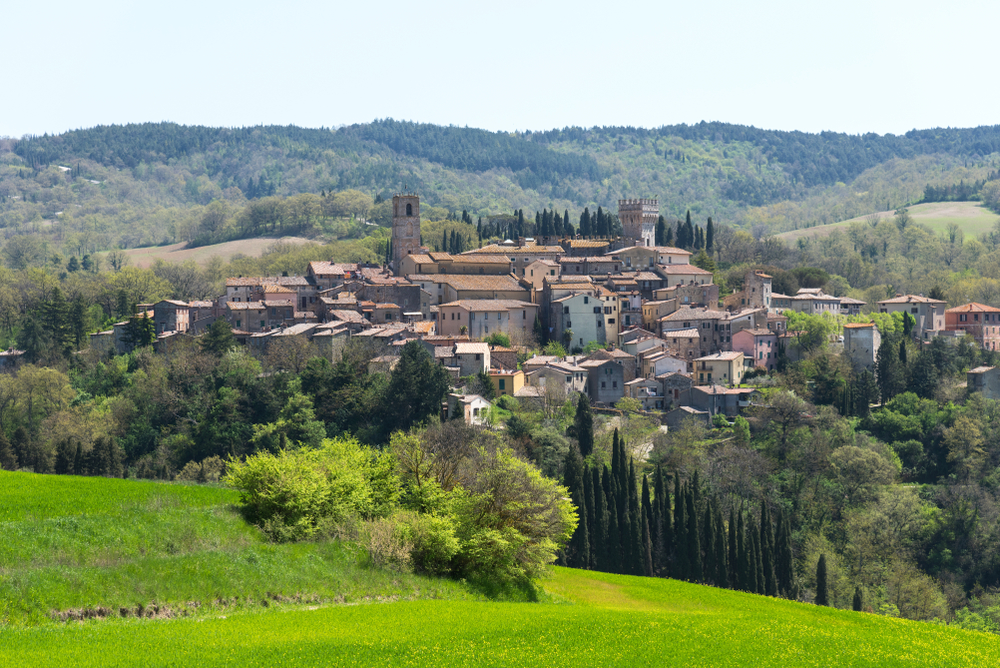
Most holidaymakers heading to San Casciano dei Bagni do so to visit the thermal waters here. These thermal springs have been attracting visitors since the 1400s onwards, drawn by their therapeutic properties which treat a number of ailments.
The spa is situated just outside San Casciano dei Bagni itself. If heading into the historic town centre, then access is via one of two doors – the Porta in the South leading into the Piazza Matteotti and the Porticciola in the North. There are a number of churches worth visiting within the town’s narrow, winding streets. These include the Collegiate of Saint Leonard and Cassiano, home to a painting by Pietro di Francesco that sits above the altar, and the Church of San Michele Arcangelo. Also in the historic centre, you’ll come across the Palazzo dell’Arcipretura. This is now the town hall but was once a courthouse and once a residence of the Podestas of San Casciano.
Santa Fiora

A Medieval town nestled at the foot of Monte Amiata, Santa Fiora is a delightful place to visit. The town’s focal point is the 16th century Palazzo del Conte situated at the highest point in Santa Fiora. Constructed over the Aldobrandeschi Castle, in the past this was the residence of the Sforza Cesarini, but is now where you will find the town hall. Head inside to discover some wonderful 16th century frescoes along with the Monte Amiata Mercury Mining Museum. This area has a long history of mercury extraction going back 200 years, and the museum is a great way to learn more about this industry.
Also of note in Santa Fiora is the Chiesa del Suffragio and the 12th century Pieve delle Sante Flora e Lucilla. The latter is named after two local saints whose relics were brought here in the 11th century. It is also home to some incredible terracottas by Andrea della Robbia. Head downhill to discover the Church of Sant’Agostino and the Capuchin Convent below. And then, keep heading downhill and you will reach Peschiera. This is a charming little lake fed by a natural spring. Head into the small Church of the Madonna della Neve. Its floor is covered in glass panels, allowing you to see the source of the spring below.
San Gimignano
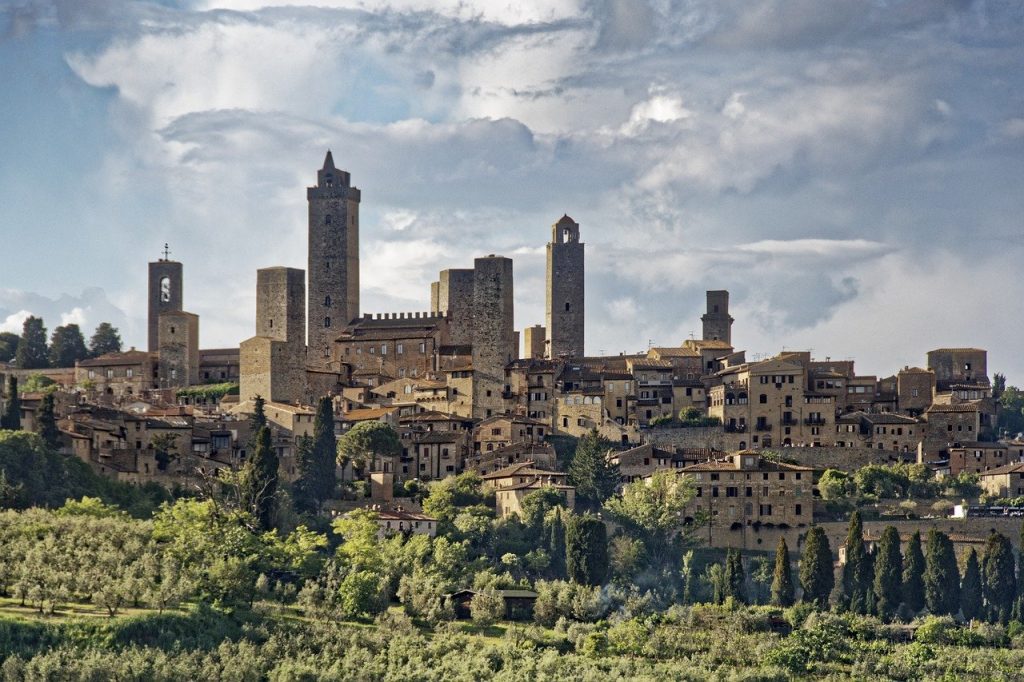
San Gimignano needs no introduction. It is famous the world over for its stunning skyline of towers. Its reputation means that it does get extremely busy but it’s a must-see destination for any Tuscan holiday.
Head to the Piazza della Cisterna at the centre of the town, so-called because of the cistern that is served by the well in the middle of the square. Then make your way to the Piazza del Duomo, homw to the Romanesque cathedral. Make a point of visiting the interior of the Collegiata which is absolutely stunning, filled with beautiful frescoes. Also worth seeing in San Gimignano is the Museo Civico and Pinacoteca. And finally, why not build up an appetite by climbing the Torre Grossa. This is the only one of the towers you’re actually able to climb up. You’ll be richly rewarded at the top by stunning views of the Val d’Elsa.
San Miniato

Sat upon 3 small hills, San Miniato is a small town that is easy to explore on foot. At the top of the town stands the Rocca (castle) where you can enjoy wonderful views over the surrounding countryside and lower Arno valley.
Also worth a visit as you move from the top of the town to the bottom is the Piazza del Popolo, home to the Church of San Domenico (where you will discover some excellent 14th century frescoes), and the Piazza del Duomo, where you will find the Duomo and its Matilde Tower with its asymmetrical clock. Also in the Piazza del Duomo is the Diocescan Museum of Sacred Art where you will find works by Filippo Lippi, Fra Bartolomeo, Verrocchio and others.
Other buildings of note include the 13th century Palazzo Vescovile, the 14th century Palazzo Comunale and the Palazzo Grifoni. Bombed by the Germans in WWII, the palace was restored and rebuilt at the end of the 20th century.
The town holds a couple of important festivals at the end of each year. The first of these is the truffle fair which attracts truffle hunters, chefs and restauranteurs from all over the world. This is followed soon after by the nativity. This is one of the largest nativity scenes in Tuscany, laid out along a pathway that represents the journey to Bethlehem.
San Sepolcro
Legend has it that San Sepolcro owes its origins to two pilgrims who travelled back from the Holy Land with a piece of rock from the holy sepulchre of Christ. As the story goes, these two pilgrims went on to build a chapel in which to house the relic. This became a Benedictine monastery and in turn this grew into a village surrounded by walls.
The town’s Romanesque cathedral – the Duomo of San Giovanni Evangelista – was created around this original chapel. Today, you will find paintings by Perugino and Piero della Francesca here. Piero della Francesca was a famous artist from this region and you’ll find a number of his paintings around here including his ‘Resurrection’ masterpiece in the Museo Civico.
The town’s main piazza may look slightly familiar to you… It has echoes of the more famous Piazza del Campo in Siena thanks to its sloped streets and tall buildings that encircle it.
Sarteano
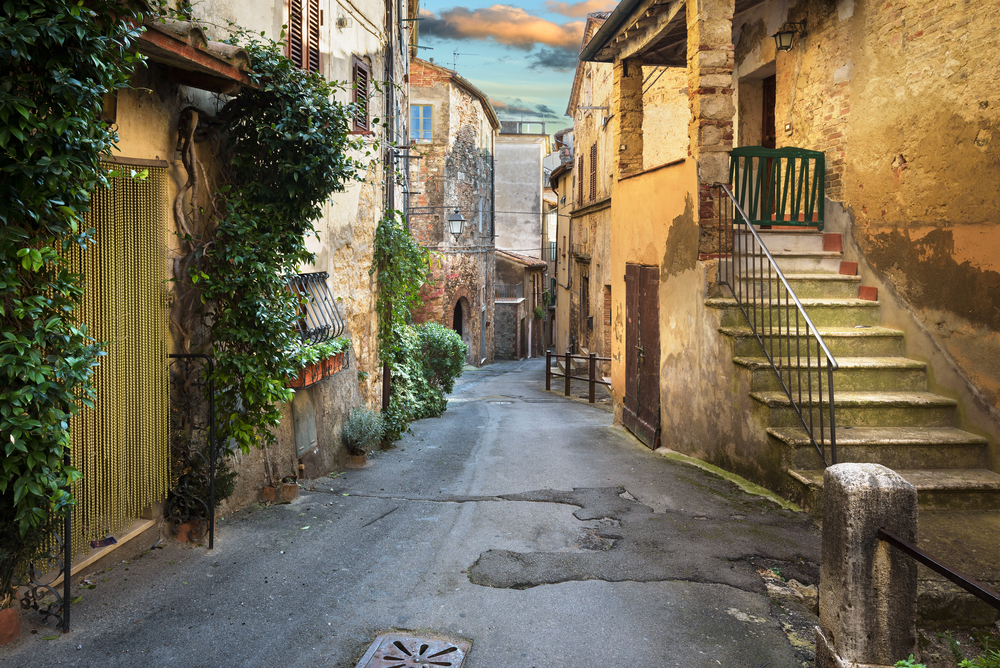
Like so many of Tuscany’s towns and villages, Sarteano is dominated by its castle that sits 500 metres above sea level. The building has been under the control of many families over the centuries include the Medici family in the 16th century and the Brandimarte family in the 17th. However, more recently, it was bought by the city at the end of the 20th century, who undertook significant restoration works to bring it back to its former glory. Inside, you can explain all of the three floors as well as enjoy the extraordinary views from the ramparts above. The views take in the whole of the Valdichiana. Head down via the secret staircase which takes you from the top to the bottom floor. At one point this would have led to an underground tunnel which people could escape through in the event of a siege but this no longer exists. And then spend some time exploring the castle’s park and courtyards.
A combined ticket will provide you with access to both the castle and the town’s archeological museum. A trip to the latter will give you a glimpse into the more ancient history of Sarteano. There are an array of Etruscan artefacts including vases, statues and other objects. One room in particular displays the finds from the ‘Pianacce‘ Necropolis where the most important discovery of the Etruscan era was found – La Tomba della Quadriga Infernale.
Also worth visiting is the Todeschini Piccolomini Palace, which sits just below the castle. The central square here is where you will also find the Arriscianti Theatre. Running since the 18th century, it is still possible to enjoy performances here today. Even if there is nothing on during your visit, you can still enjoy a guided tour.
And, of course, Sarteano can also boast some beautiful churches including the churches of Saint Martino and Saint Vittoria, the Church of Saint Frances and the convent of St. Chiara. And just outside Sarteano is the Spineta Abbey founded in 1085.
Scarperia and San Piero
These are two Medieval villages. Scarperia is dominated by the 14th century Palazzo dei Vicari. This was once home to the vicari, officials who governed the area on behalf of Florence, and its exterior walls remain decorated with the crests of these men. Inside, you’ll find some beautiful Renaissance frescoes as well as the Museum of Cutting Tools which will explain the knife-making history of the village.
Also of note is the 14th century Propositura as well as the slightly older Oratory of the Madonna di Piazza (1320) which is where the vicari would have been invested and where now you’ll find Jacopo del Castentino’s painting of the Madonna di Piazza.
San Piero is equally pretty. It’s worth visiting the village church dating back to the 12th century. Pay particular attention to the terracotta font which is widely believed to be the work of Giovanni della Robbia. And opposite the church is the Oratory della Compagnia which became a hospital in 1275.
Siena
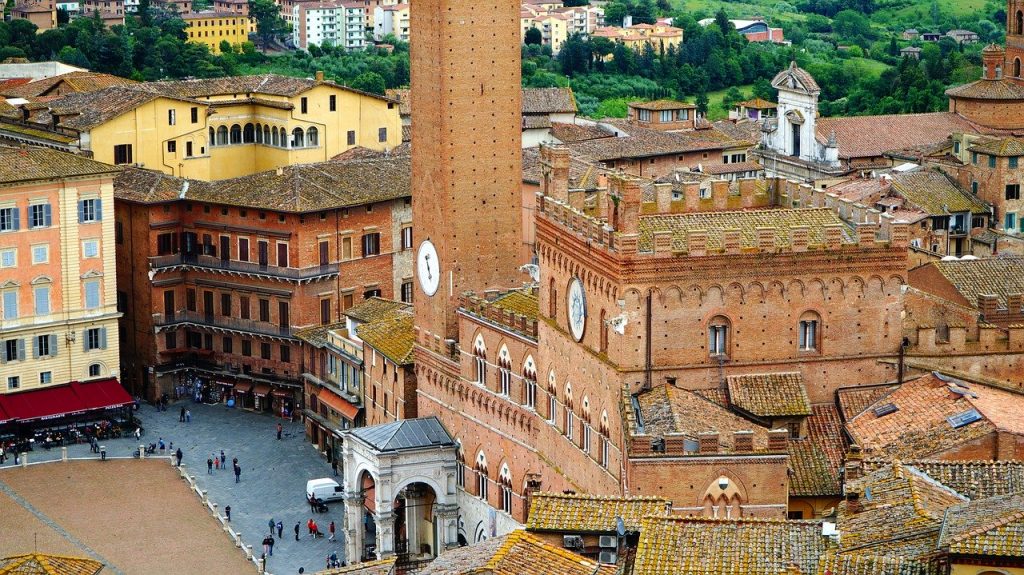
One of Tuscany’s most famous cities. Siena is best known for its beautiful central piazza and annual palio. Find out more about what to see and do in Siena in our 48 hour travel guide to Siena.
Sorano
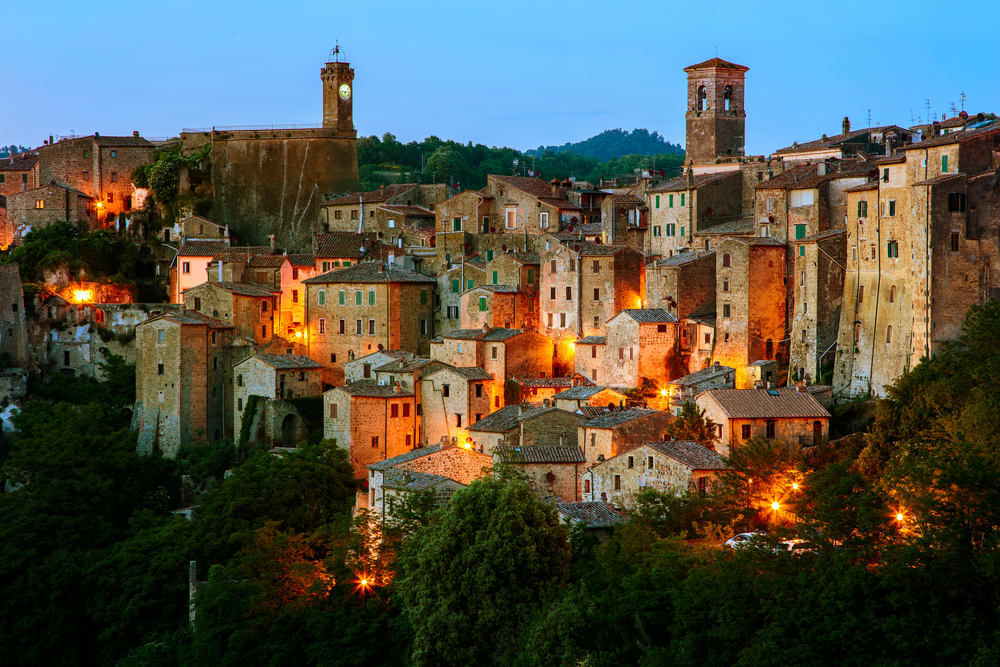
Sorano is known affectionately as the ‘Matera of Tuscany’ and it’s not hard to see why, with buildings that cling onto the rocks. Access to the town is via either the Porta di Sopra or Porta dei Merli.
One of the most impressive buildings in the town is the Orsini fortress. Built by the Aldobrandeschi family, the structure is now home to the Museum of the Middle Ages and the Renaissance. Make sure you also visit the Collegiate Church of San Nicola and take a walk along the Vie Cave, a network of pathways, some sitting underground in the tuff rock and some overground.
Whilst here, you may also want to make a detour a short way outside the town to visit the Citta del Tufo Archeological Park, where you’ll find a treasure trove of archeological and cultural remains from Sovana, Sorano and Vitozza.
Or why not spend some time at the Terme di Sorano, natural springs where you will find the water at a constant temperature of 37.5 °. The historic 15th century swimming pool here – Il Bagno dei Frati – was once used by the friars who lived in the premises of the current parish church of Santa Maria dell’Aquila.
Sovana
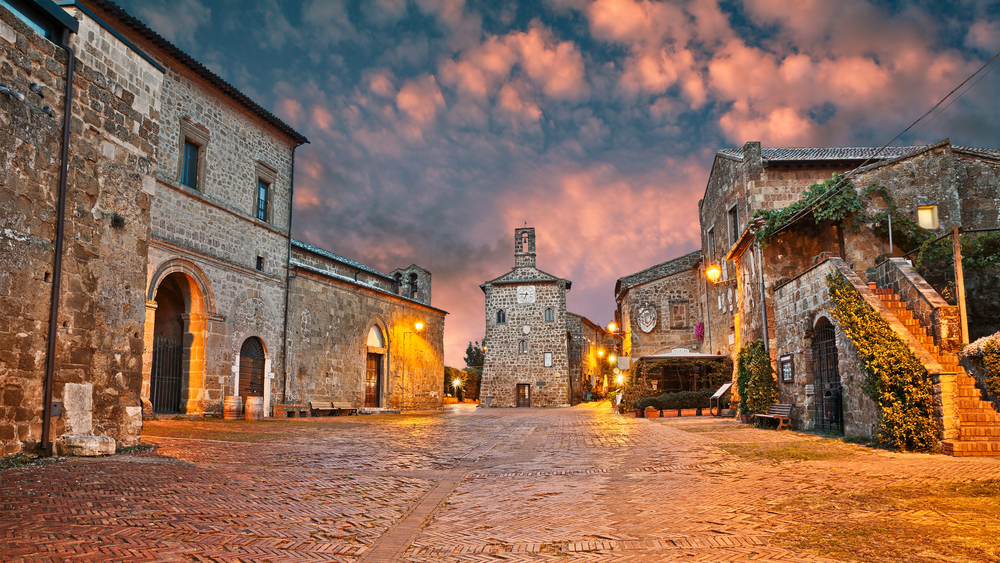
A tiny little town but still well worth a look, Sovana is again situated on top of a hill but unlikely many of Tuscany’s hilltop towns, its centre is flat. Whilst it probably will only take you an hour to explore, it’s still worth a visit. The main square is the red brick Piazza del Pretorio. Here you will find the Church of Santa Maria Maggiore (home to the oldest ciborium in Tuscany), the Loggia del Capitano and the Palazzo del Archivo. Look at the palace facade to find a series of stone coat of arms which would have belonged to Siena’s commissars whilst inside you will find the archaeological museum. This is home to artefacts fro the Tomba Ildebranda in the nearby Necropolis of Sovana. Also of note nearby is the Duomo of Sovana.
Head from here to the remains of the Rocca Aldobrandesca, which still dominates the town. Once this would have been the site of a bakery and grain warehouse but now just the portal, a tower and a small stretch of wall remain.
Suvereto
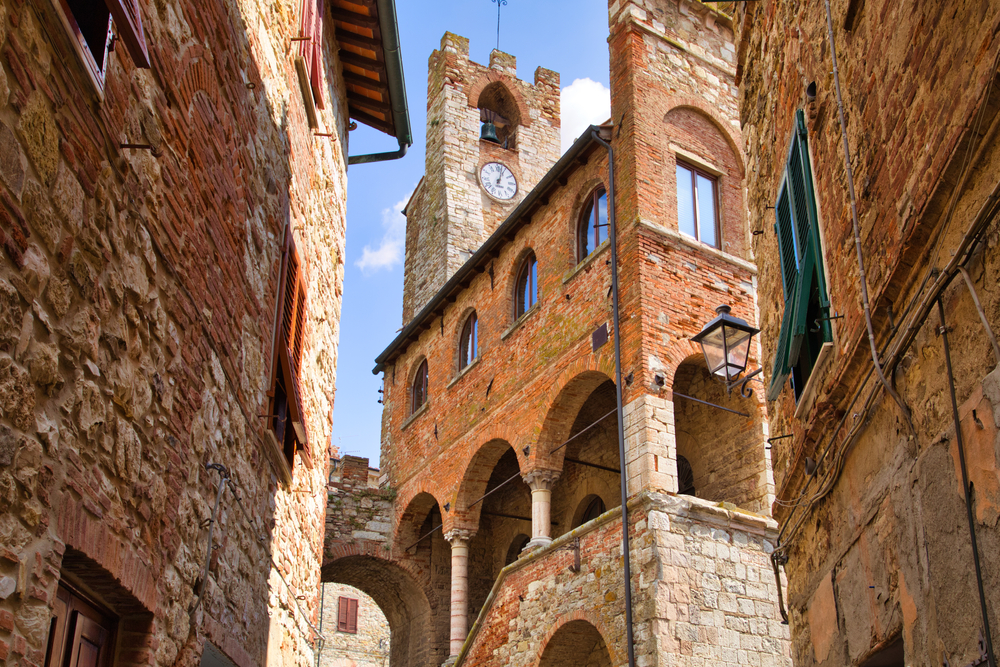
Situated in the Maremma district of Tuscany, Suvereto is absolutely charming and it will come as no surprise that it is also included on the list of ‘borghi piu belli d’Italia‘. Surrounded by ancient walls and towers, an intricate web of alleyways and steps take visitors through the narrow streets to the ruins of the ancient rocca or Suvereto Castle. The latter was once the residence of the Aldobrandeschi family. There are numerous churches worth visiting, including the Church of San Giusto and its adjacent Museum of Sacred Art. Also worth seeing is the Medieval town hall. Dating back to 1200, it sits next to an old clock tower which was constructed to symbolise the signing of the Charta Libertatis which paved the way for the town to enjoy freedom from the dominating Aldobrandesci family.
Trequanda
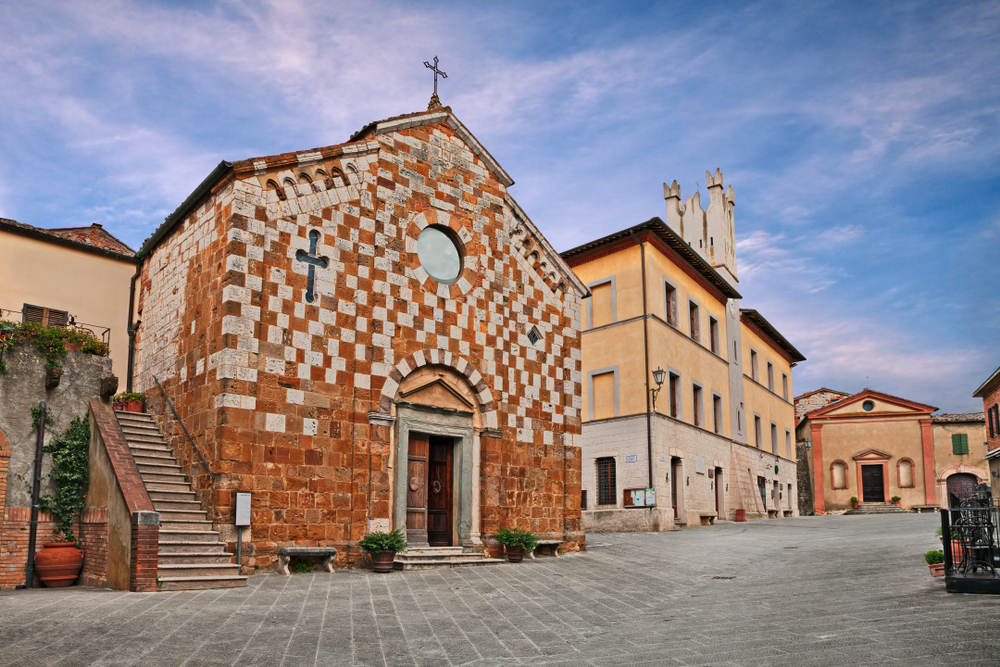
Head into the hilltop town of Trequanda via one of its two gates – Porta al Sole or Porta al Leccio. Inside, you’ll find a charming Medieval village, constructed around its majestic castle built by the Cacciaconti family back in the 13th century. The white stone castle is now a ruin, with just the crenelated tower remaining along with the outer walls and two of the three entrance doors. However, inside you will find a wonderful Italian garden and courtyard.
The highest point of the town is the Piazza Garibaldi, a large airy square where you will find the Town Hall and the 13th century Romanesque Church of Saint Peter and Saint Andrew. The church boasts quite a unique facade with white and dark contrasting stone blocks and inside, you’ll find a number of important artworks.
Just outside the historic centre of Trequanda is the Molino a Vento Tower, a dovecote with around 500 terracotta nests created for hundreds of doves.
Viarreggio
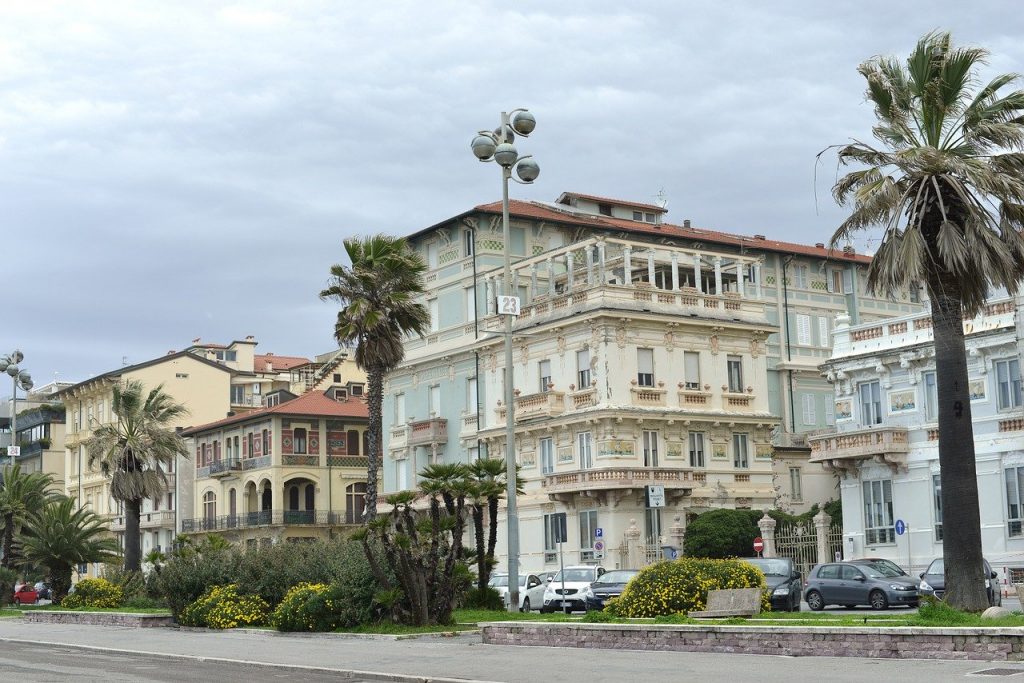
Viareggio is a popular seaside town in Tuscany, nicknamed the Pearl of the Tyrrhenian Sea. Holidaymakers have been flocking to the town for centuries, lured by Viareggio’s 10 km of beaches. As far back as 1822, Napoleon Bonaparte’s sister stayed here for a holiday and the resort immediately became a fashionable holiday destination. It’s also a great place for a walk along the 3 km ‘La Passeggiata‘, a wide stretch of road that runs parallel to o the beach and which is dotted with cafes (including the Caffe Margherita), restaurants and gelateria. And it’s also popular among fine art enthusiasts attracted by the art deco villas and Villa Paolina Civic Museum.
Viareggio is definitely most famous for its carnival though. Spread out over 4 weeks, tourists come from all over Italy to witness this incredible spectacle with giant papier mache floats parading through the streets. The carnevale has been running since 1873 and ever since, across four consecutive Sundays, floats with larger than life caricatures (often ridiculing the world of politics) make their way through the streets. After the parade, there are the rioni – parties that continue throughout the evening.
Vinci
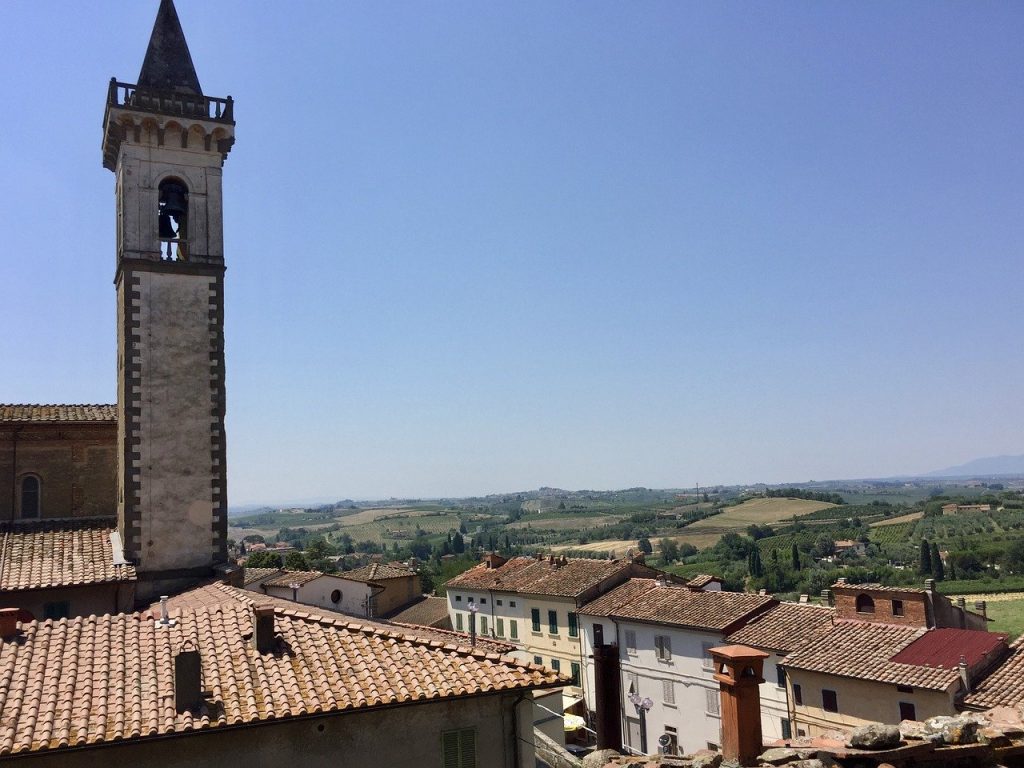
In 1452, Vinci was the birthplace of Leonardo da Vinci so Vinci is the perfect spot to find out more about this celebrated artistic and technological genius. Not surprisingly, the town has a museum dedicated to the man – the Museo Leonardiano. Laid out over three floors, visitors will discover original drawings and over 60 re-created models of his inventions. The Church of Santa Croce in Vinci is where it is believed Leonardo da Vinci was baptised. Not only that but you can also visit the house where Leonardo was born – La Casa Natale di Leonardo. It’s 3 km from the centre of Vinci but there is a lovely footpath that takes you through olive groves if you want to head there on foot.
Volterra
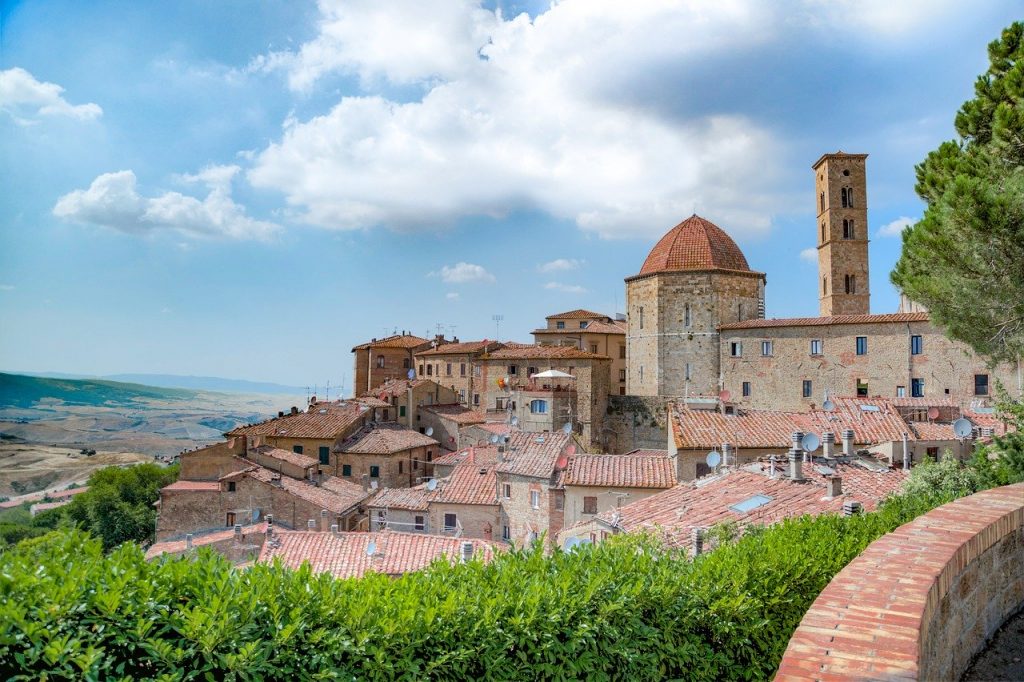
In more recent times, Volterra has become famous for bring the setting for ‘New Moon’, the second book in the Twilight vampire series. However its history dates back centuries before this to Etruscan times.
Volterra certainly packs a punch when it comes to ancient landmarks. You’ll find one of the best preserved examples in Italy of a Roman amphitheatre here dating back to the 1st century AD, as well as the remains of a Roman forum and Roman baths. Or to see even older landmarks, head to the Parco Archeologico Enrico Fiumi, which is surrounded by the remains of the Etruscan walls built in the 4th century B.C. It’s worth seeking out the gates – there are six, of which the Porta dell’Arco is the oldest and most intact. More Etruscan artefacts can be found in the Guarnacci Etruscan Museum. Volterra is also home to the Pinacoteca, an excellent art gallery displaying the work of artists dating from the 14th to 17th century.
Known as the ‘city of alabaster’, wander through the streets of Volterra and you will come across a number of workshops where you can find plenty of alabaster ornaments begging to become souvenirs. There’s also a museum dedicated to the distinctive stone, which tells the story behind the ancient craft – from its production to commoditisation. It’s also worth heading to the Guarnacci museum, which showcases a spectacular array of alabaster sculptures from the Etruscan era.
If you would like to stay in Volterra, then this stunning villa in Volterra is the perfect base for your luxury holiday in Tuscany.
If you fancy exploring Tuscany in more depth for yourself, and are looking for your perfect villa in Tuscany, then take a look at the selection of villas and apartments in Tuscany available from holiday rental specialists, Bookings For You.


